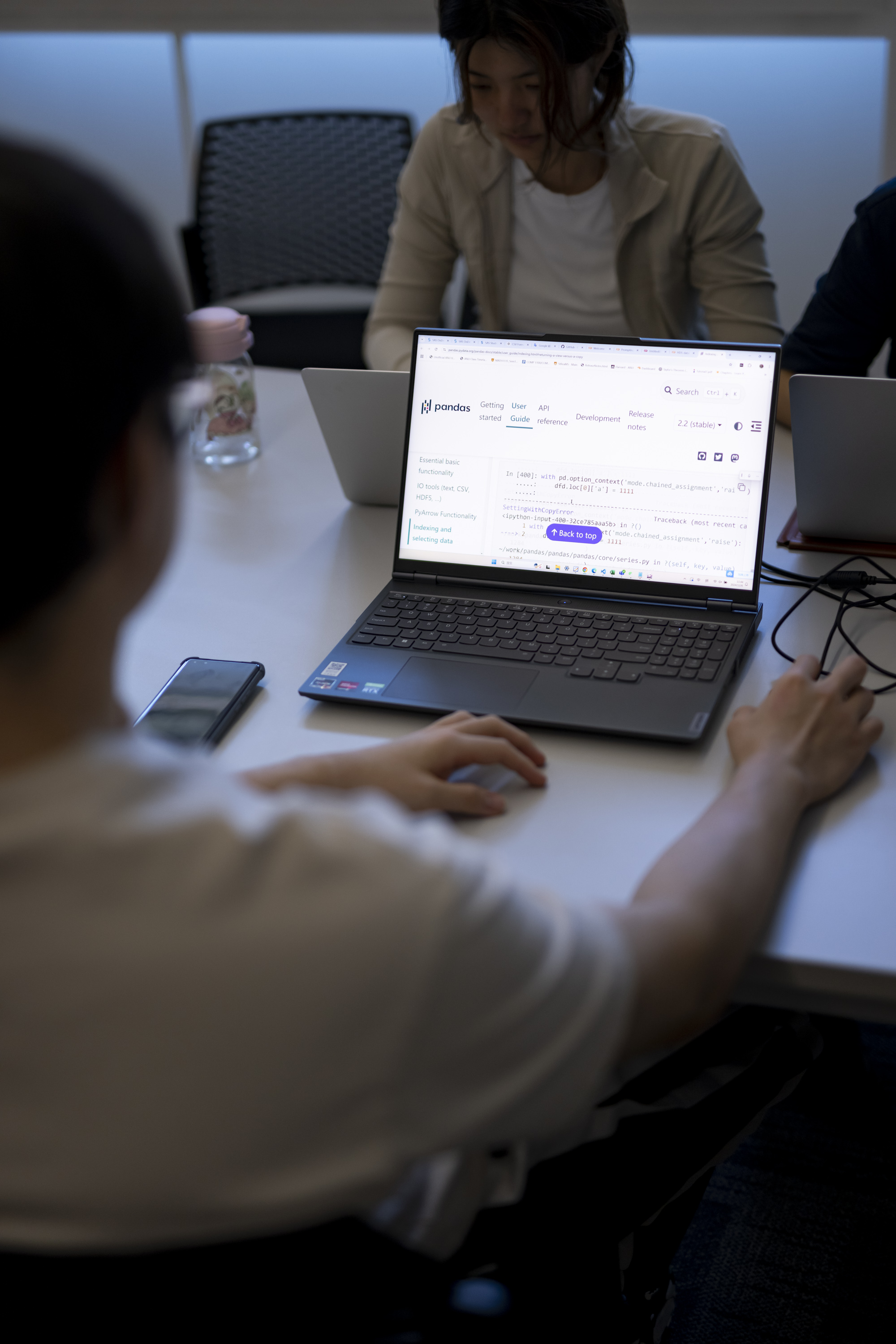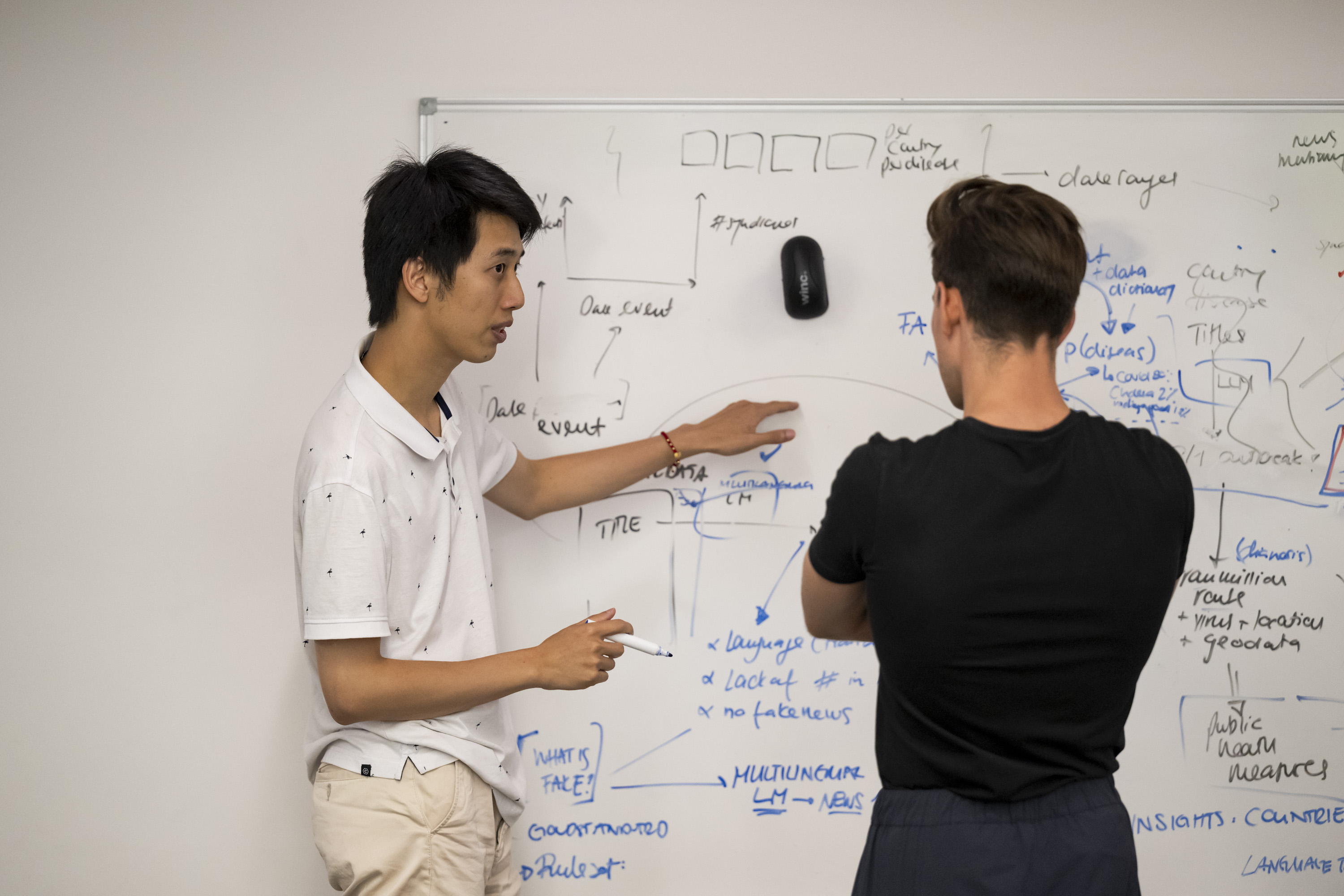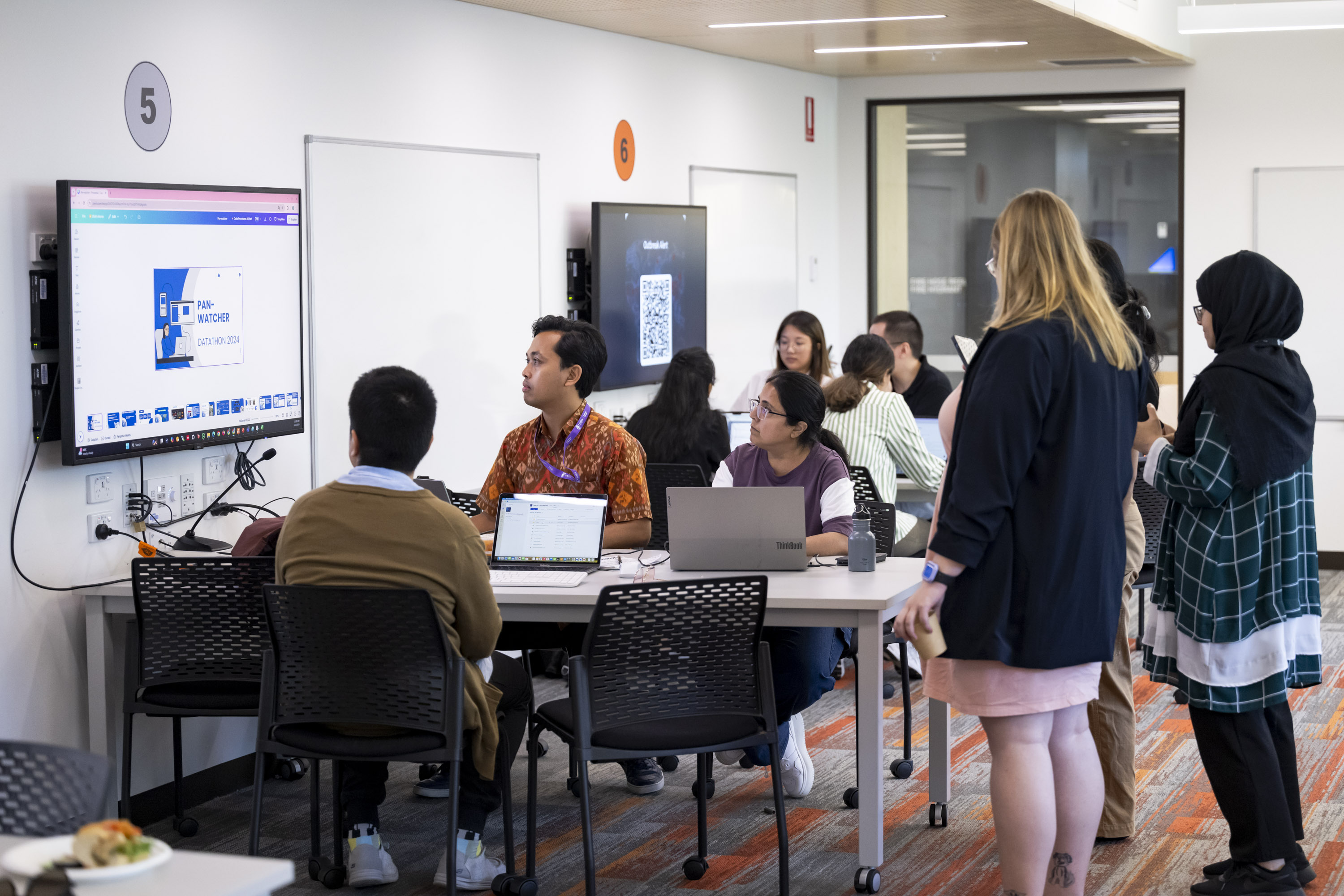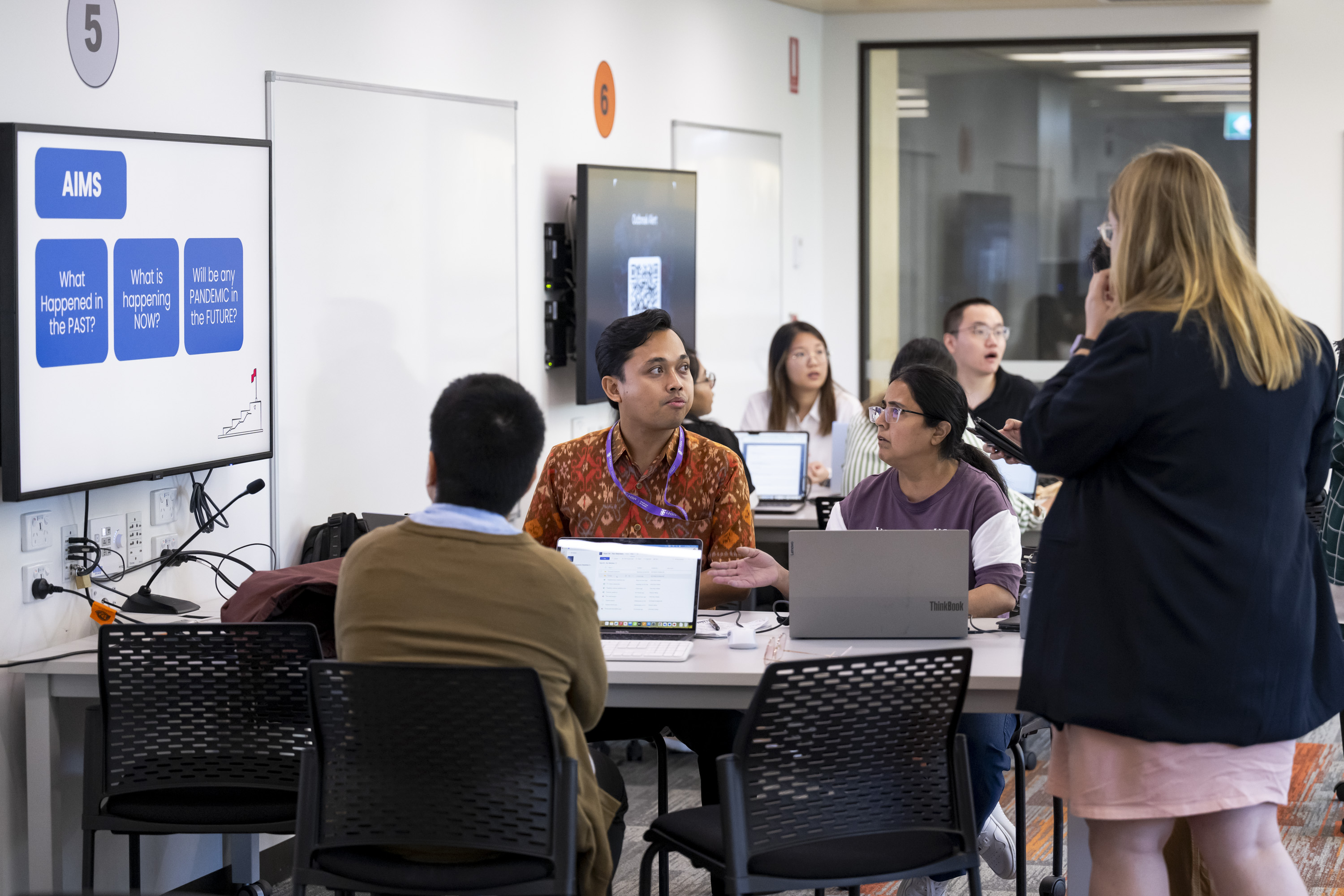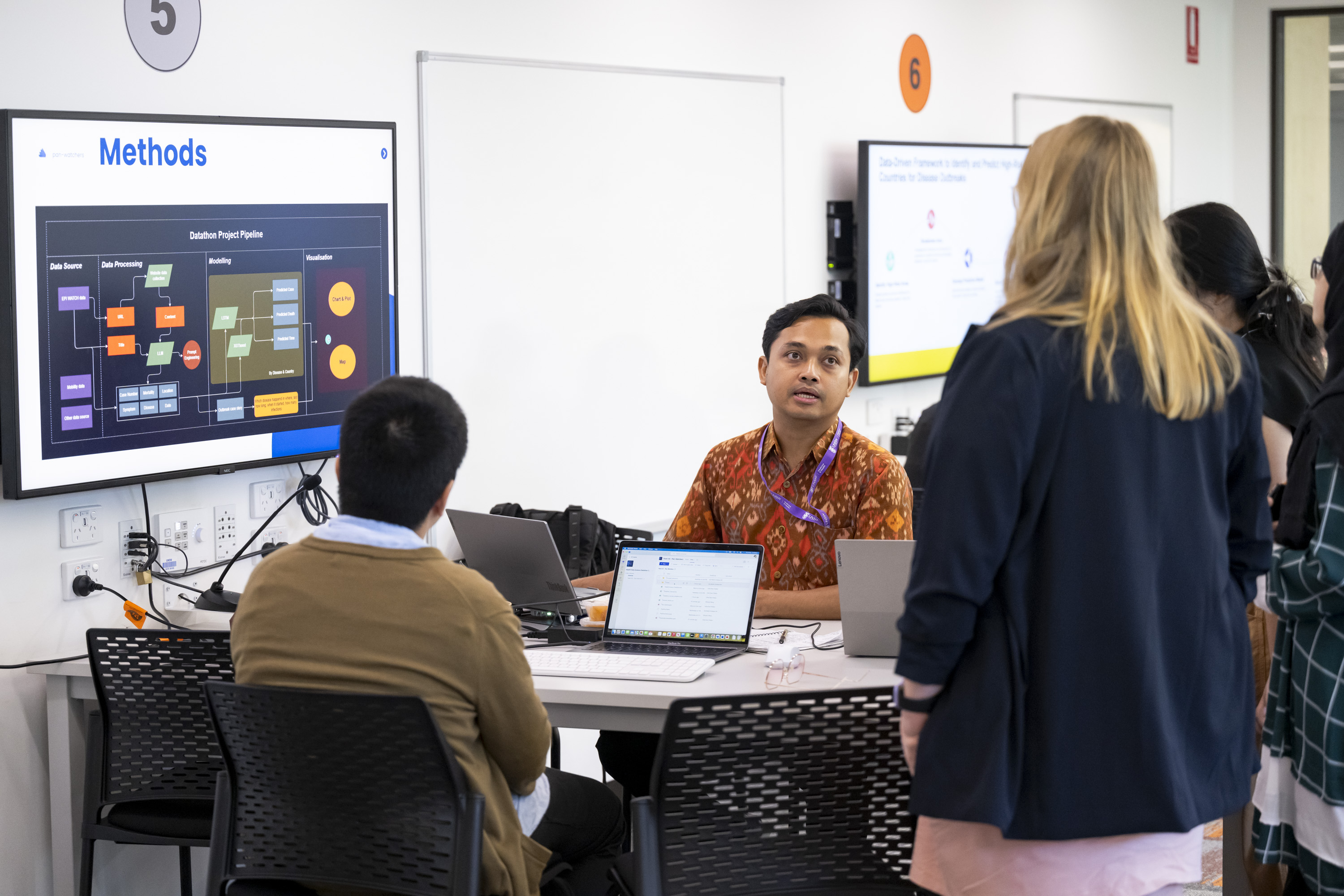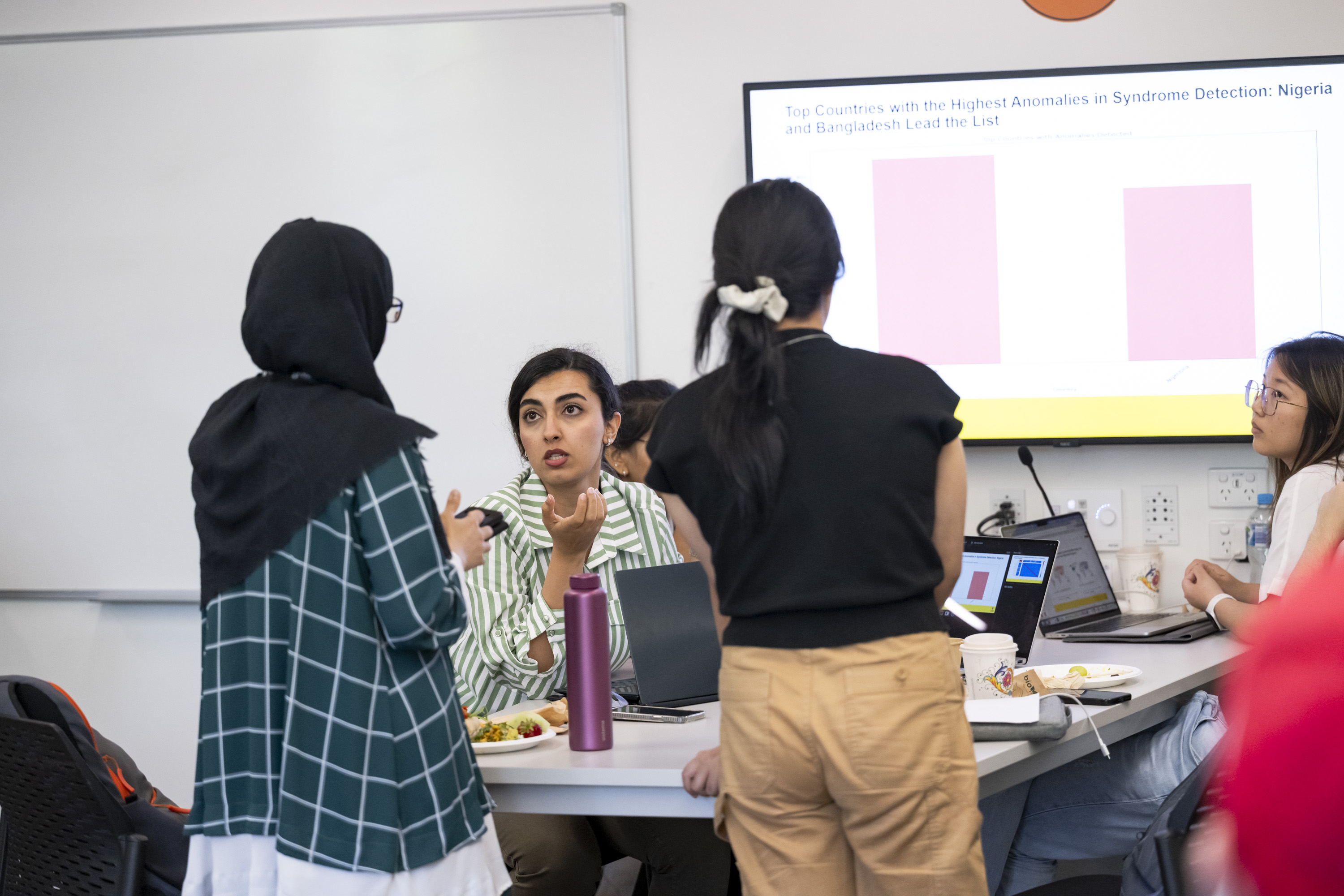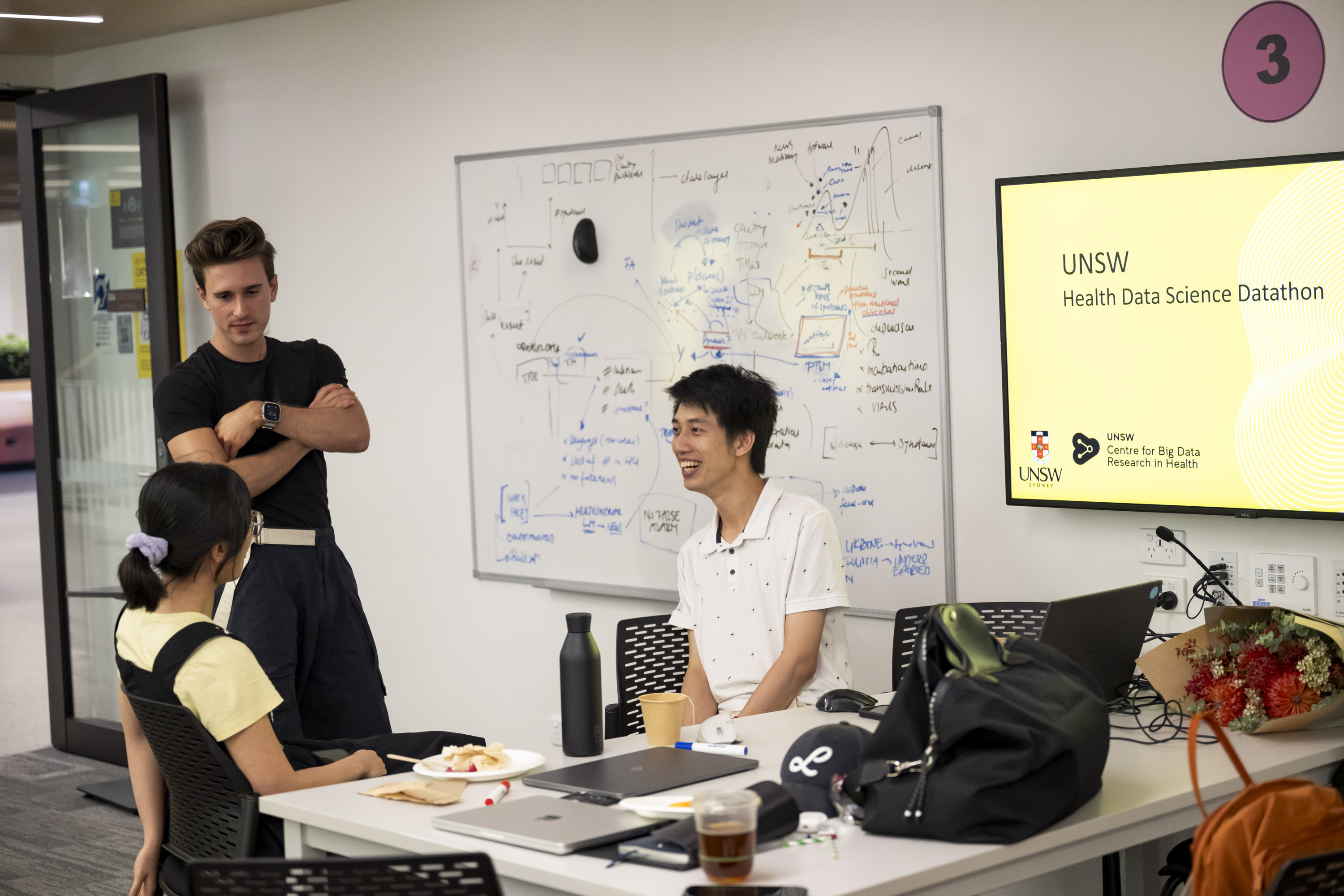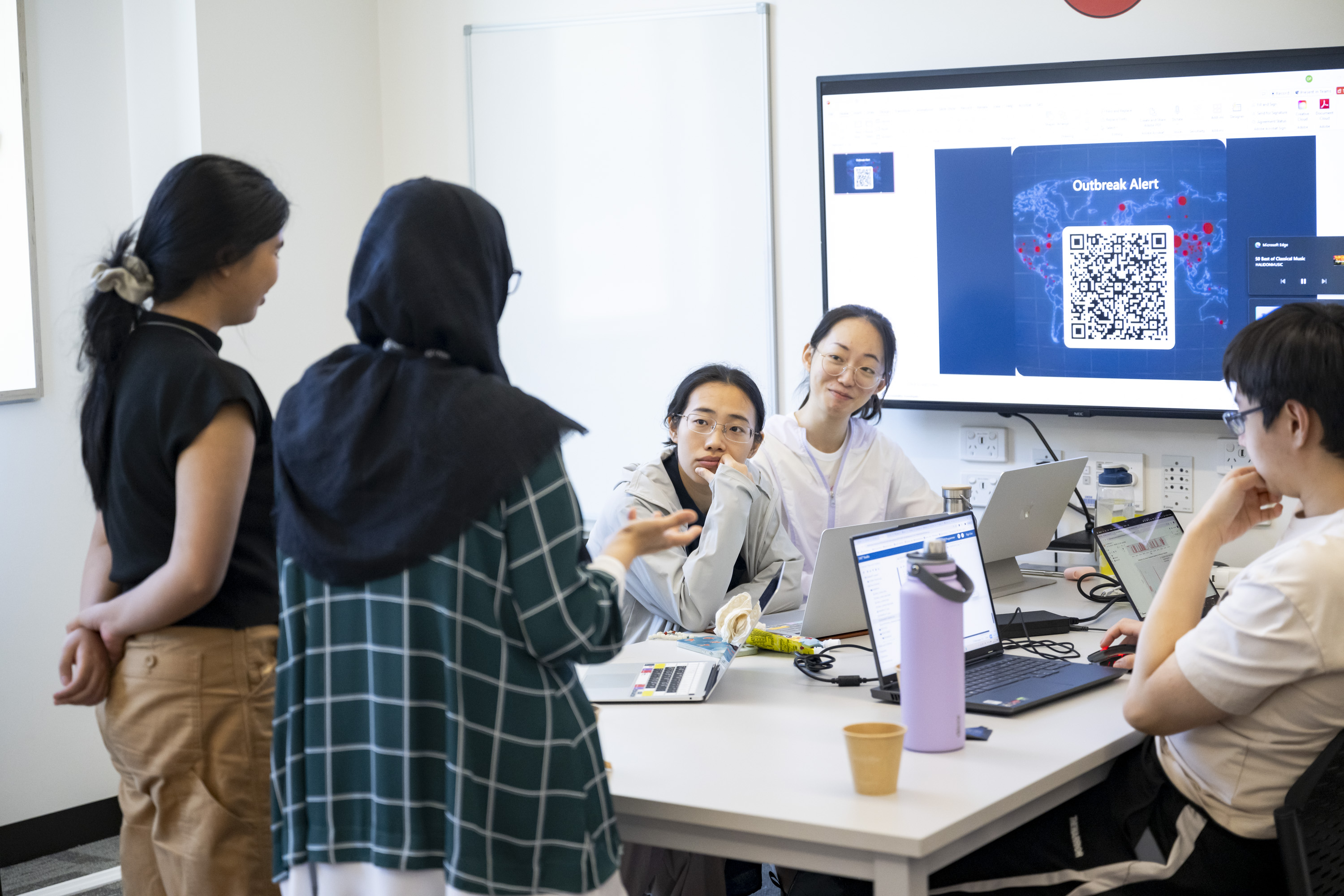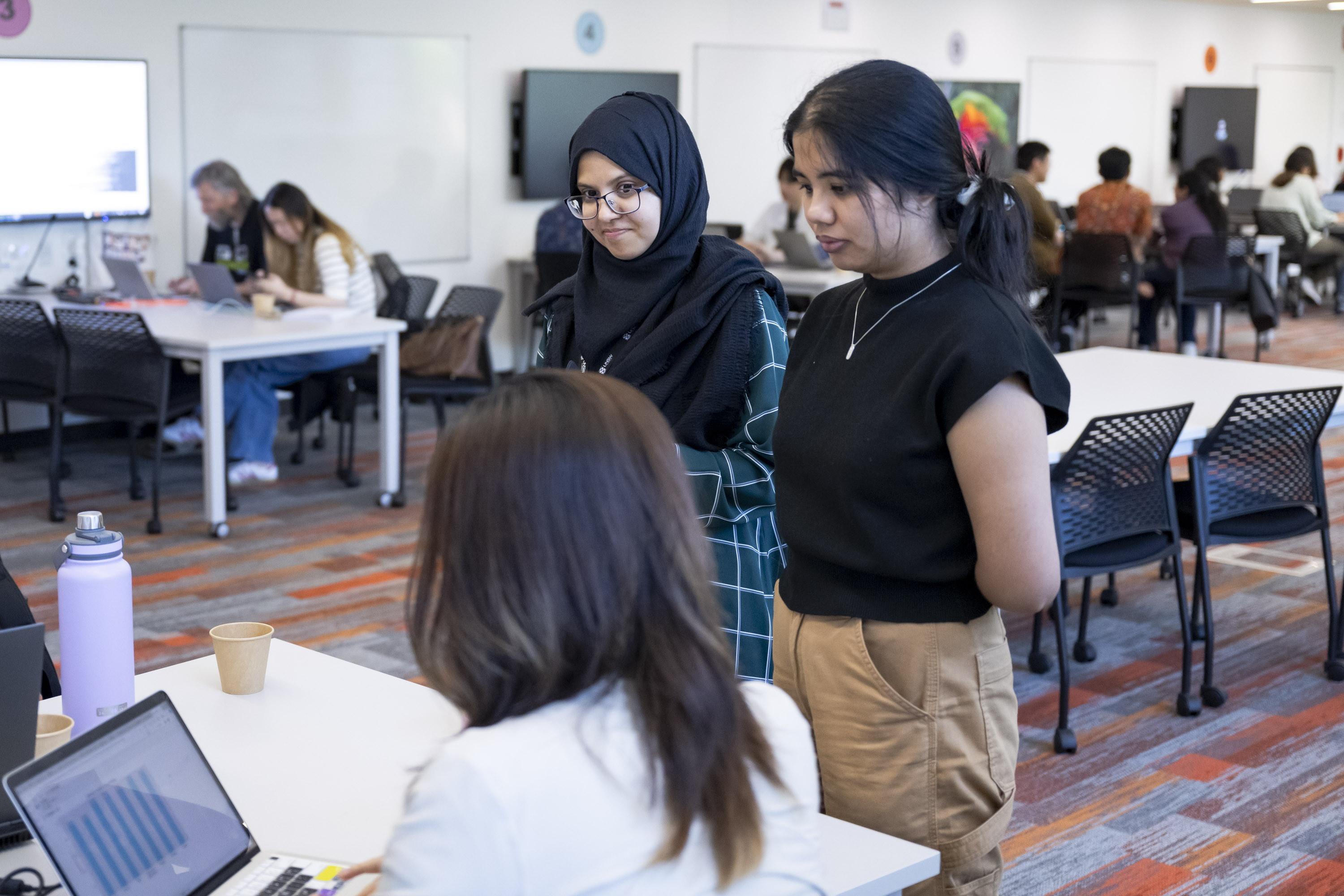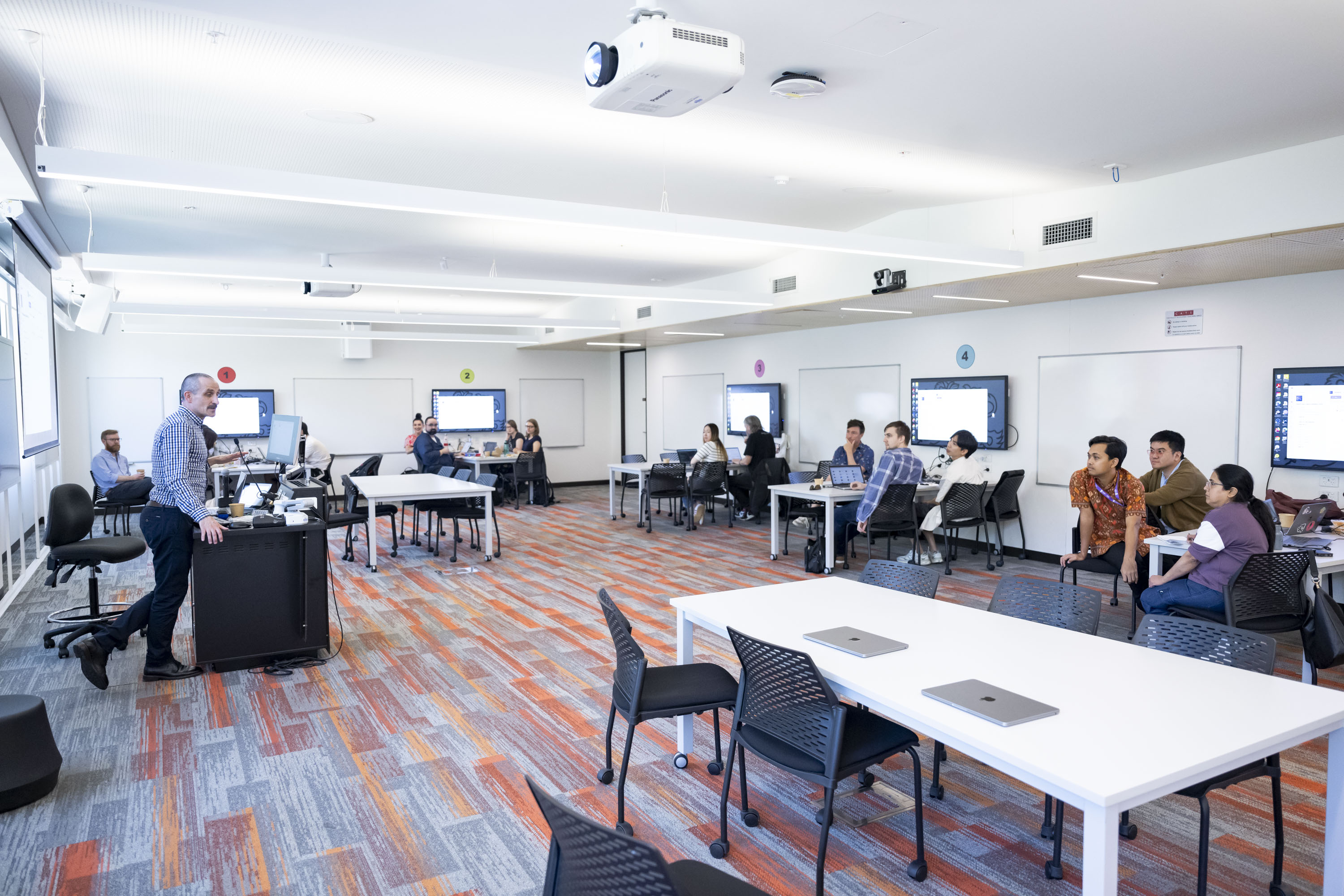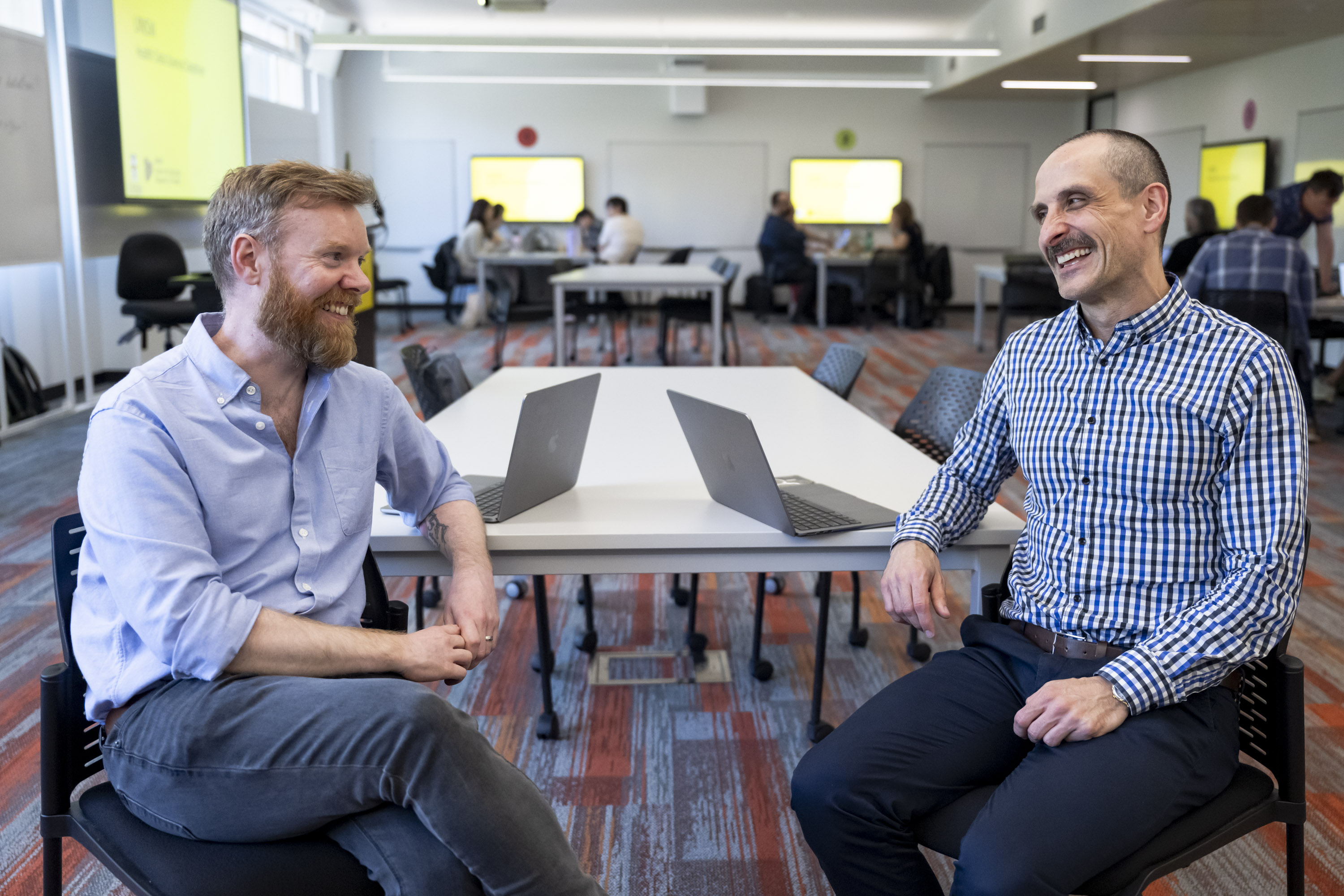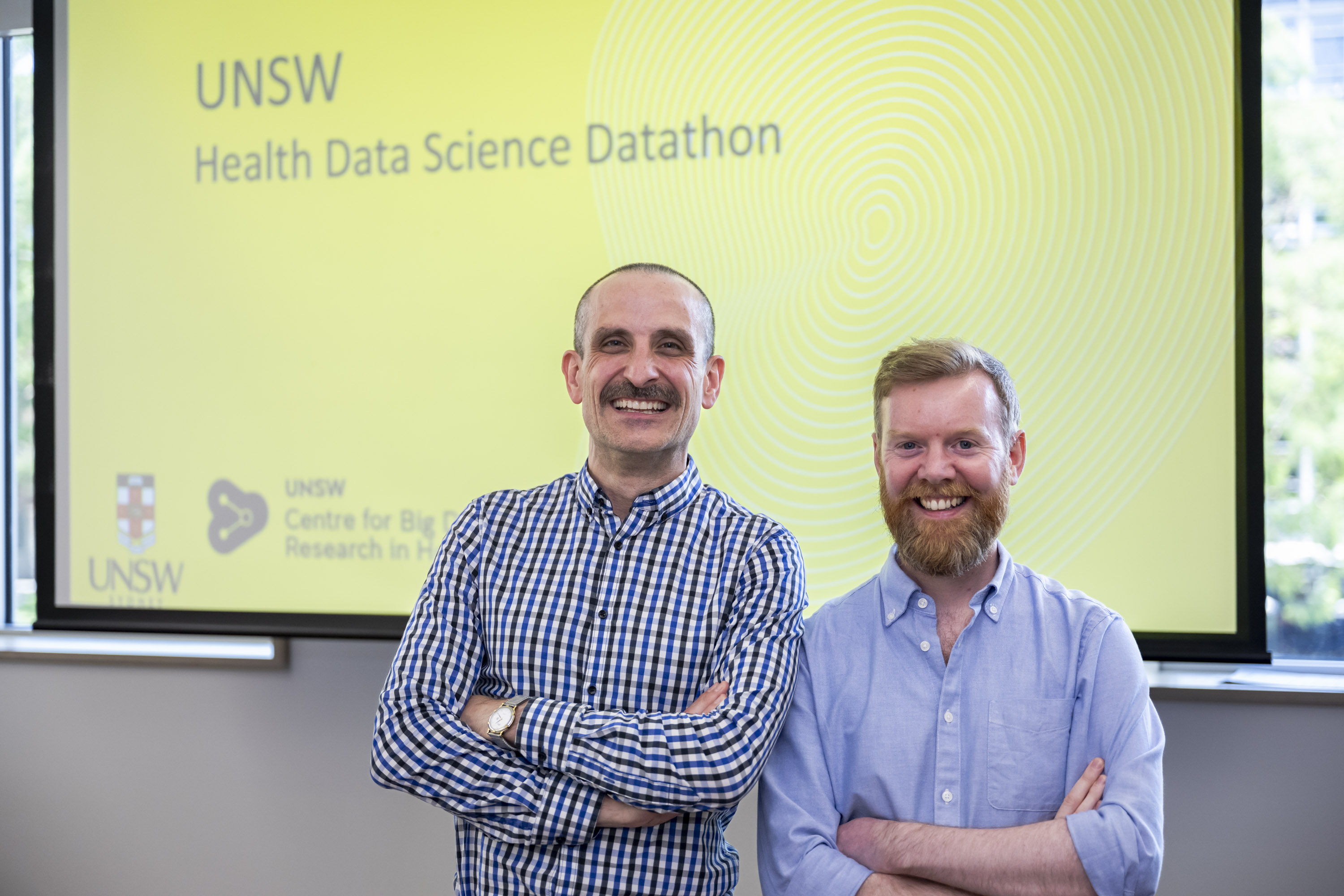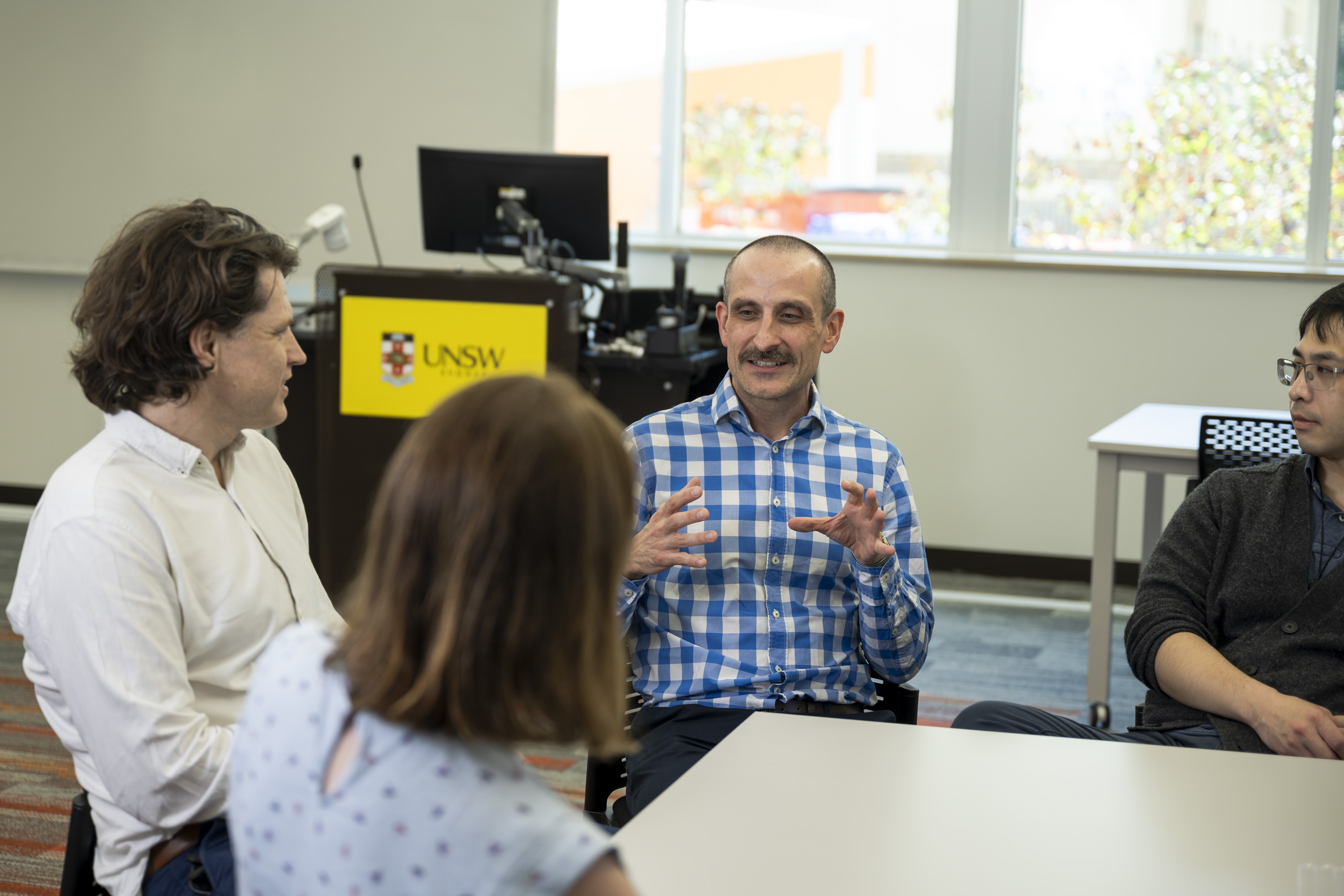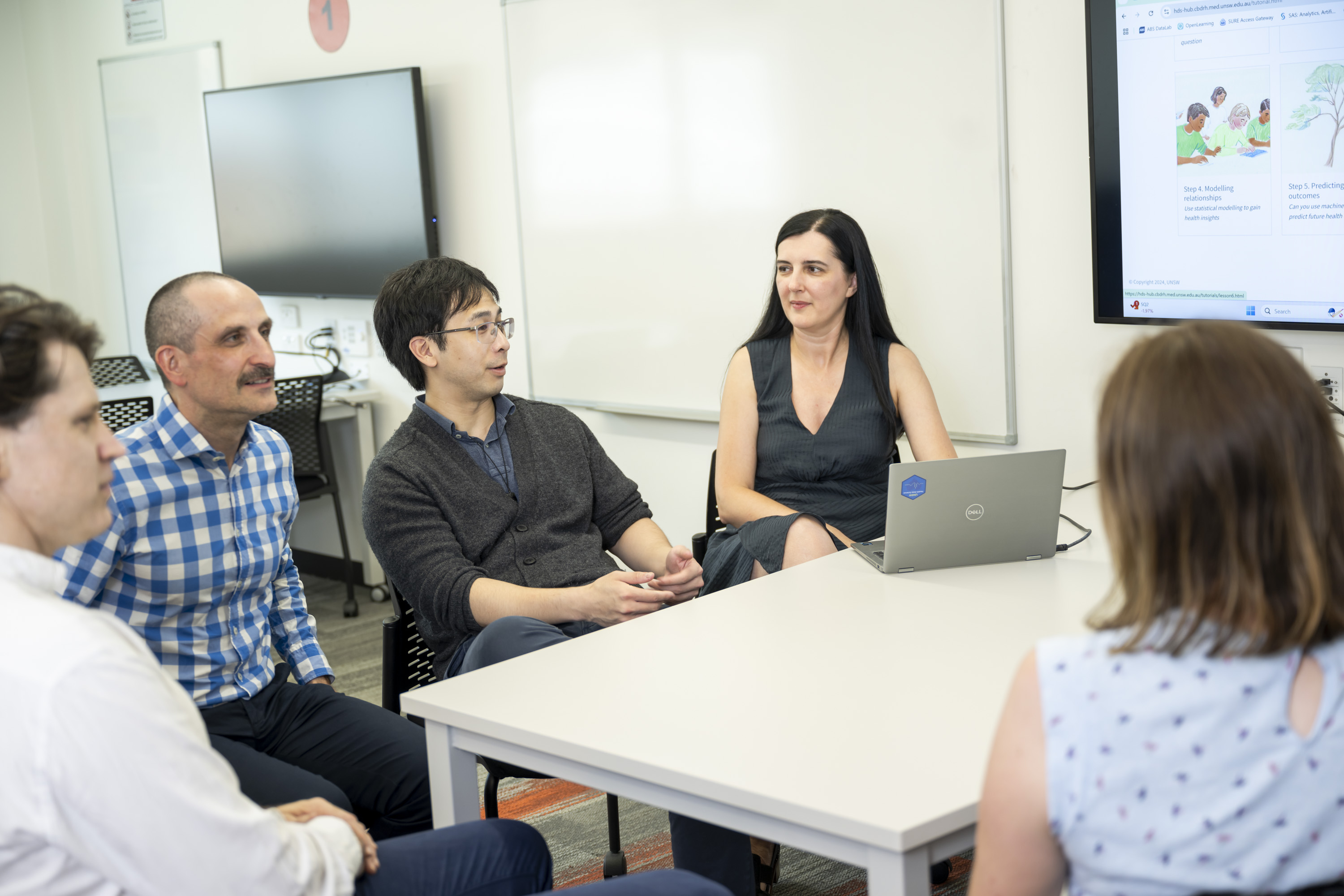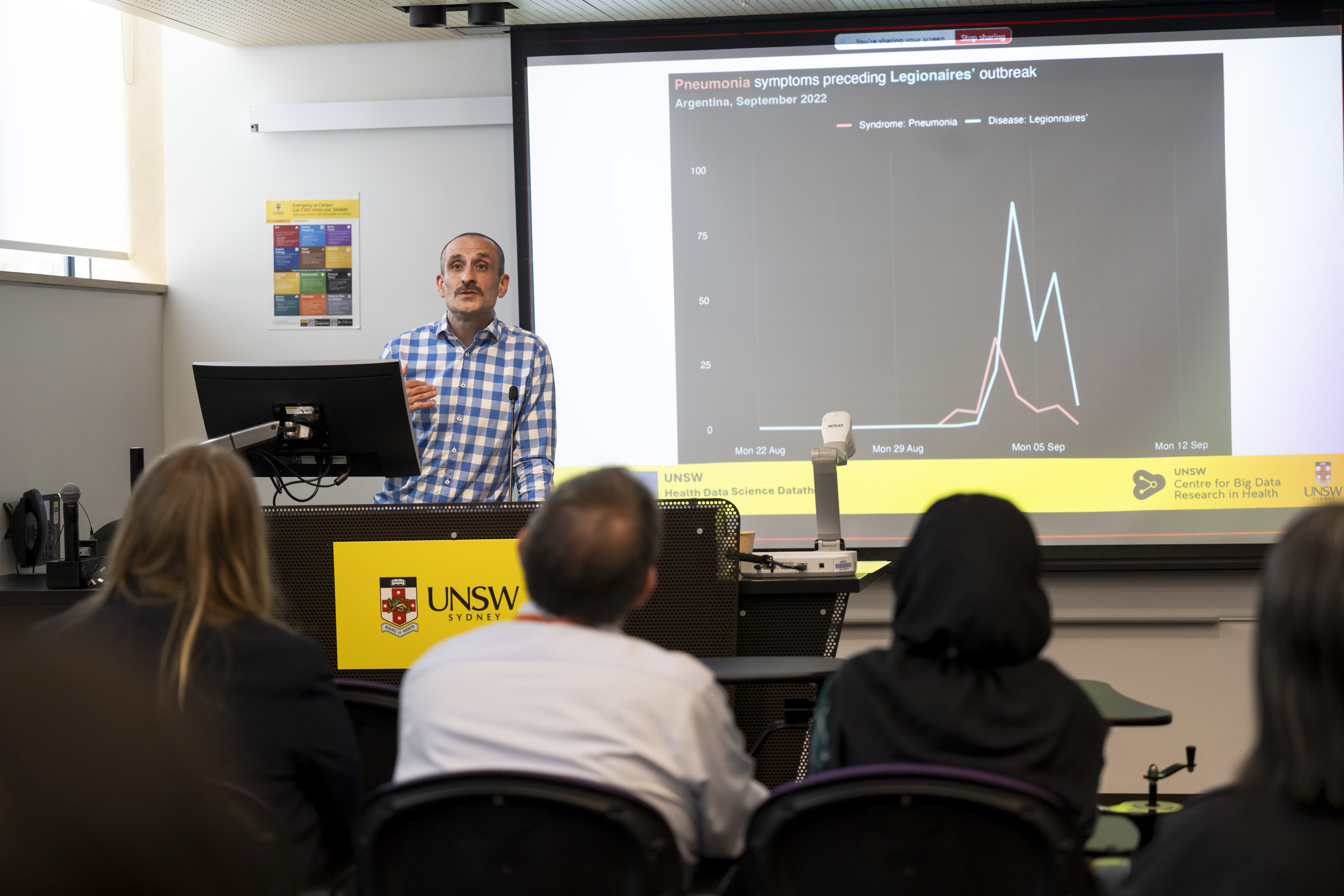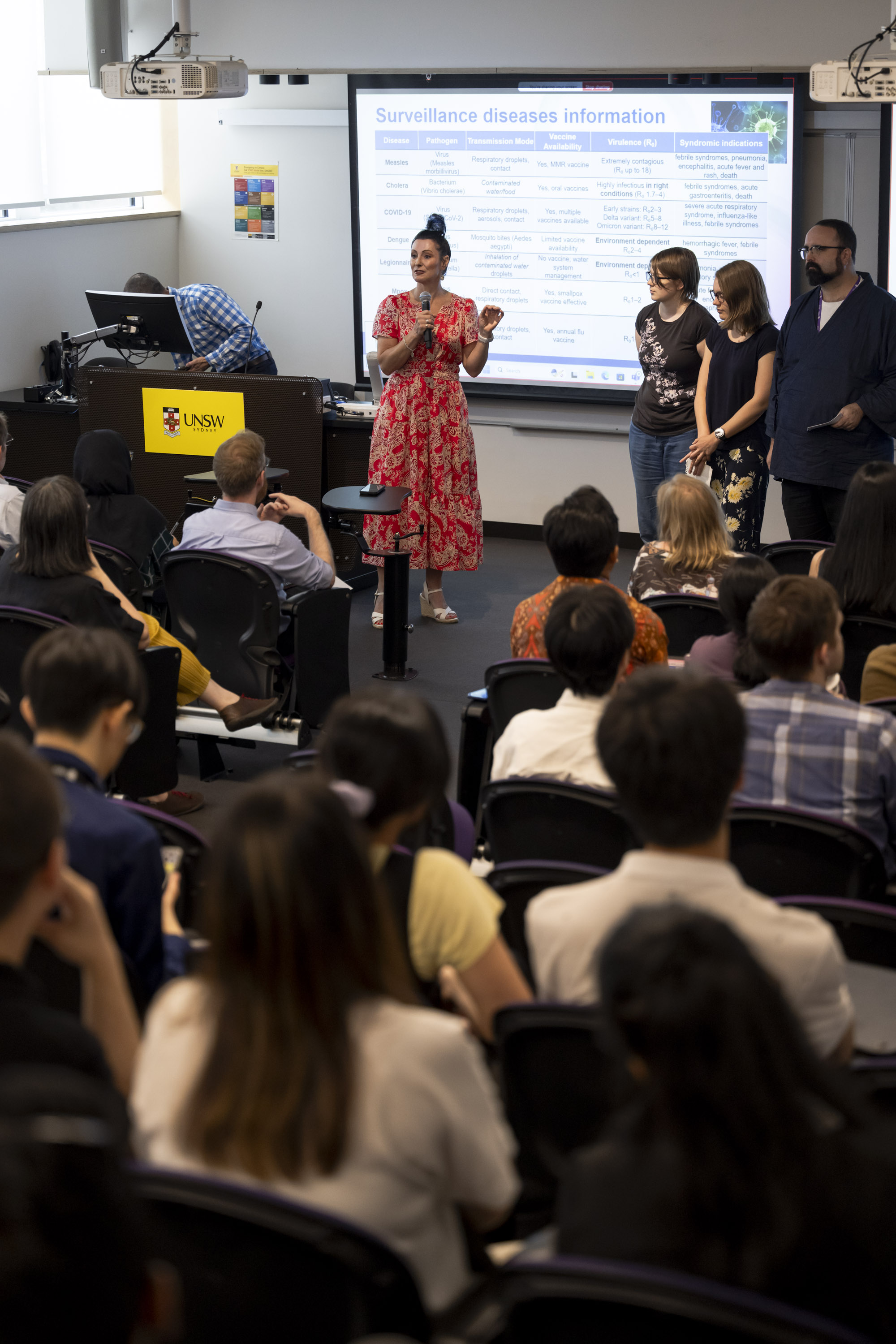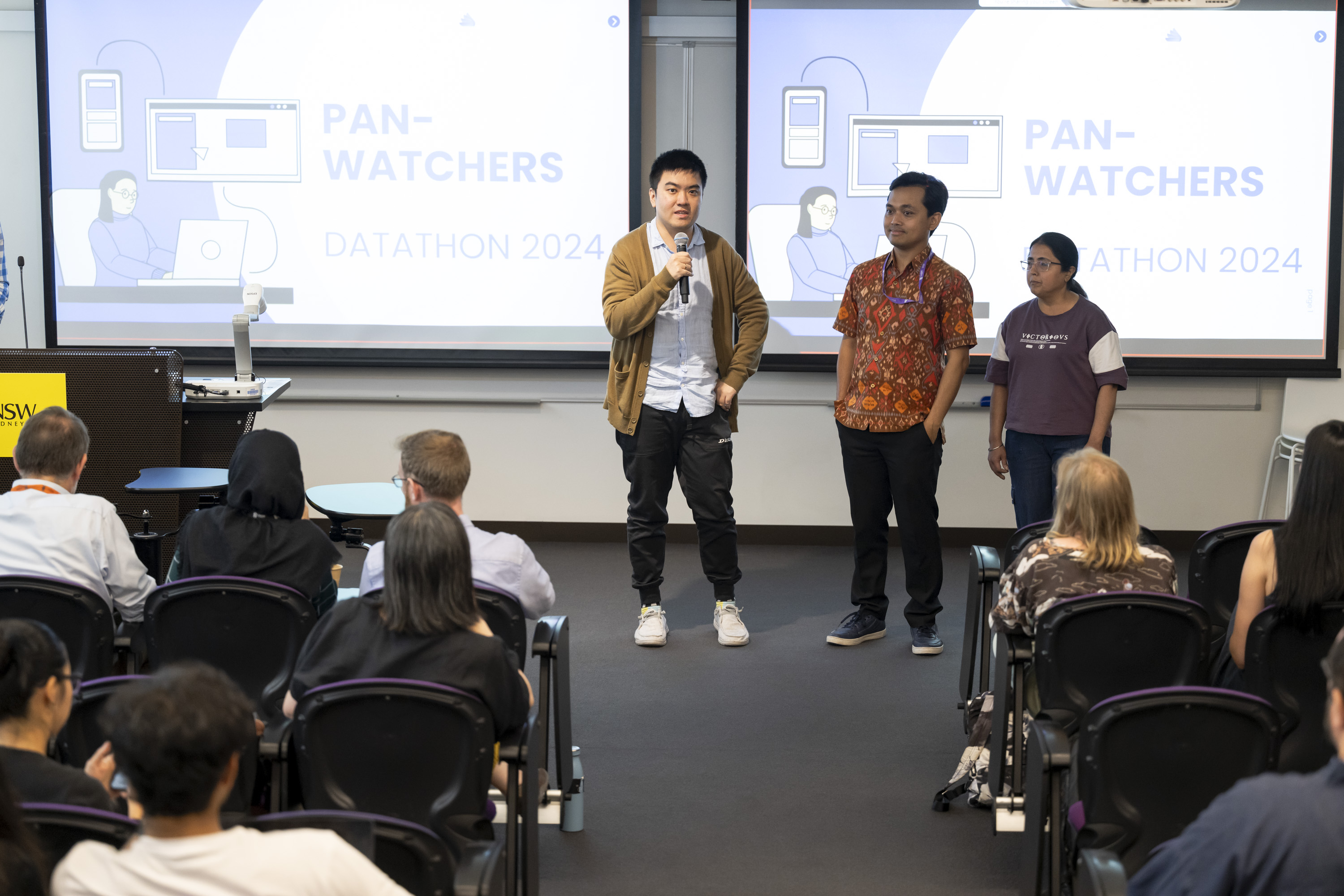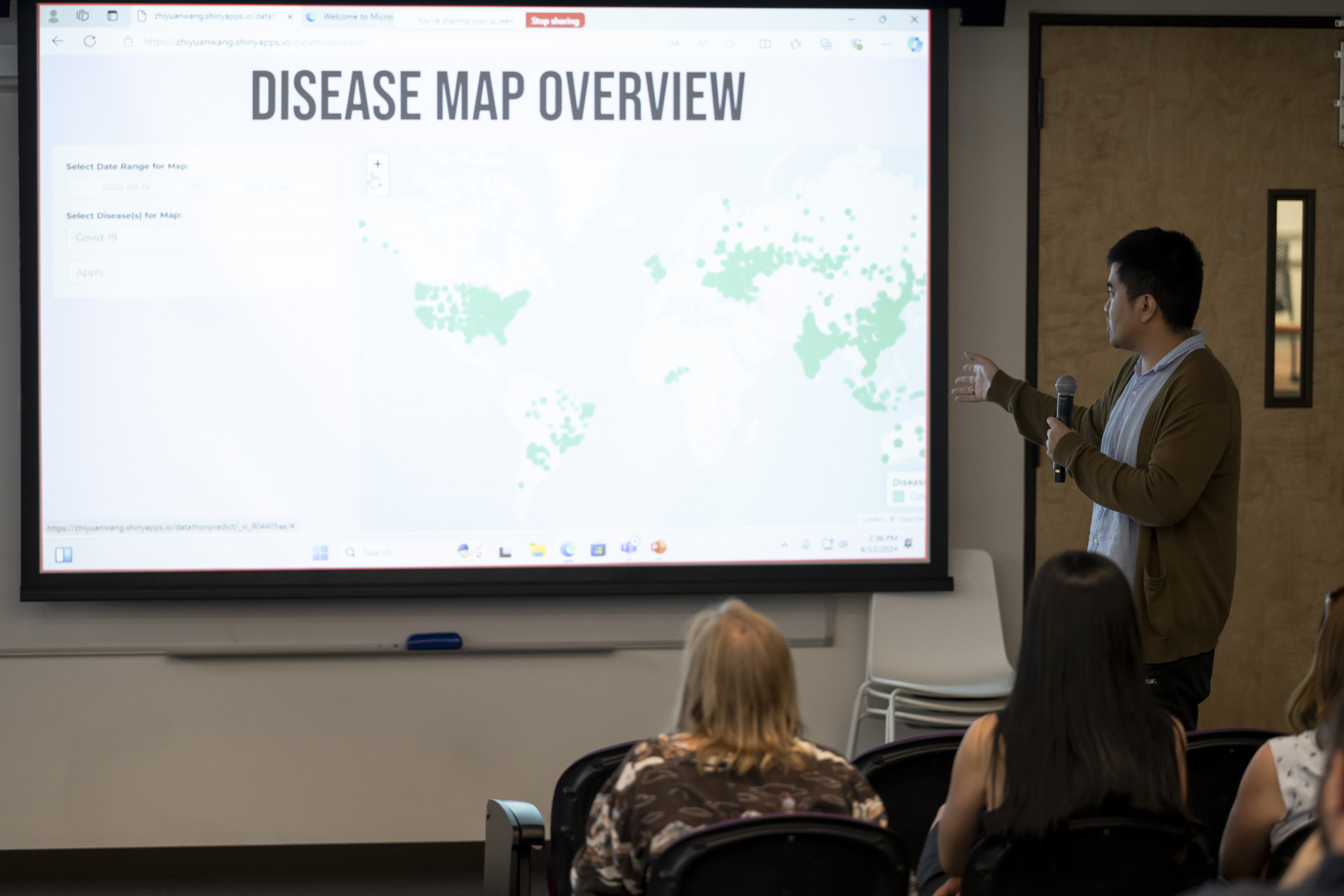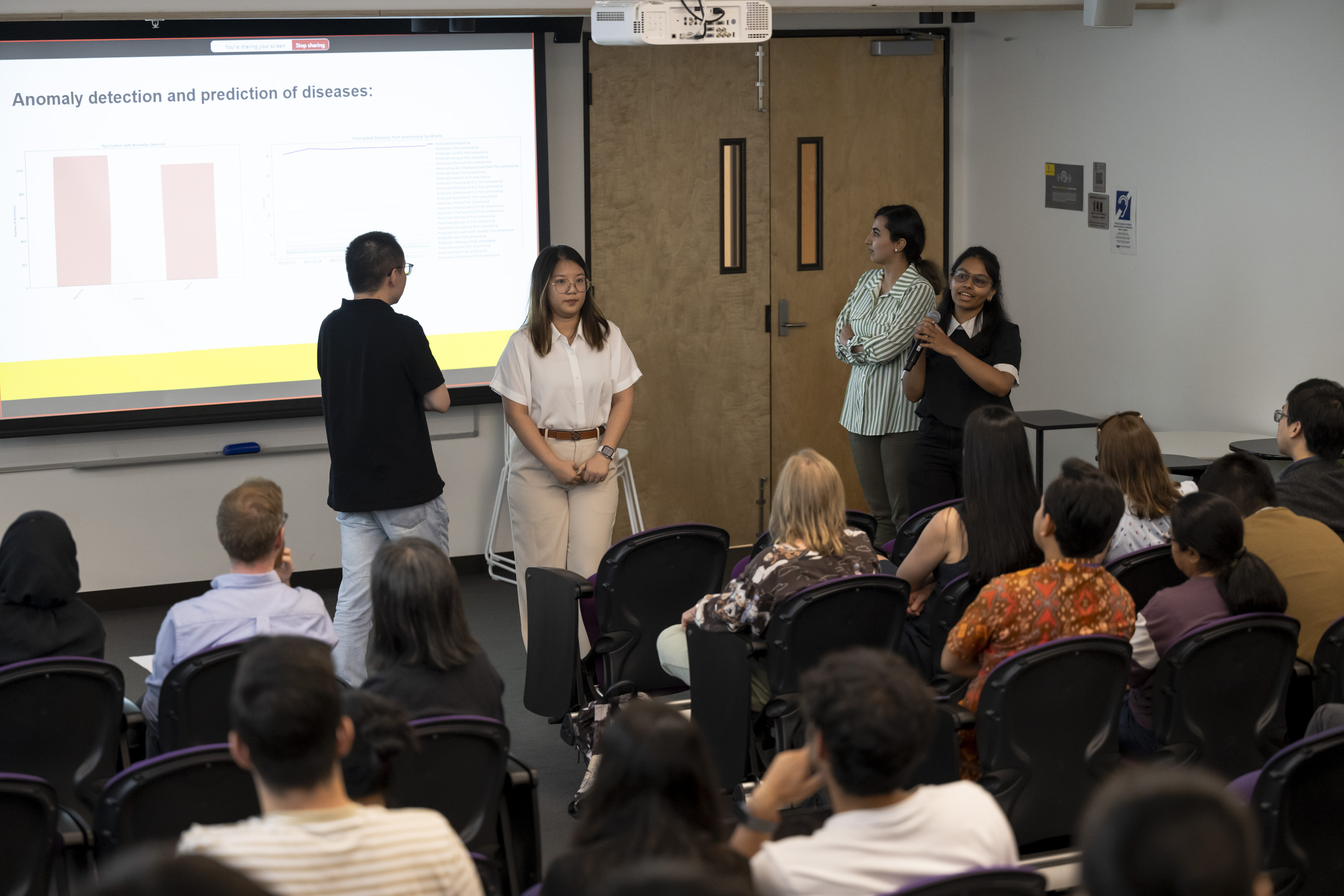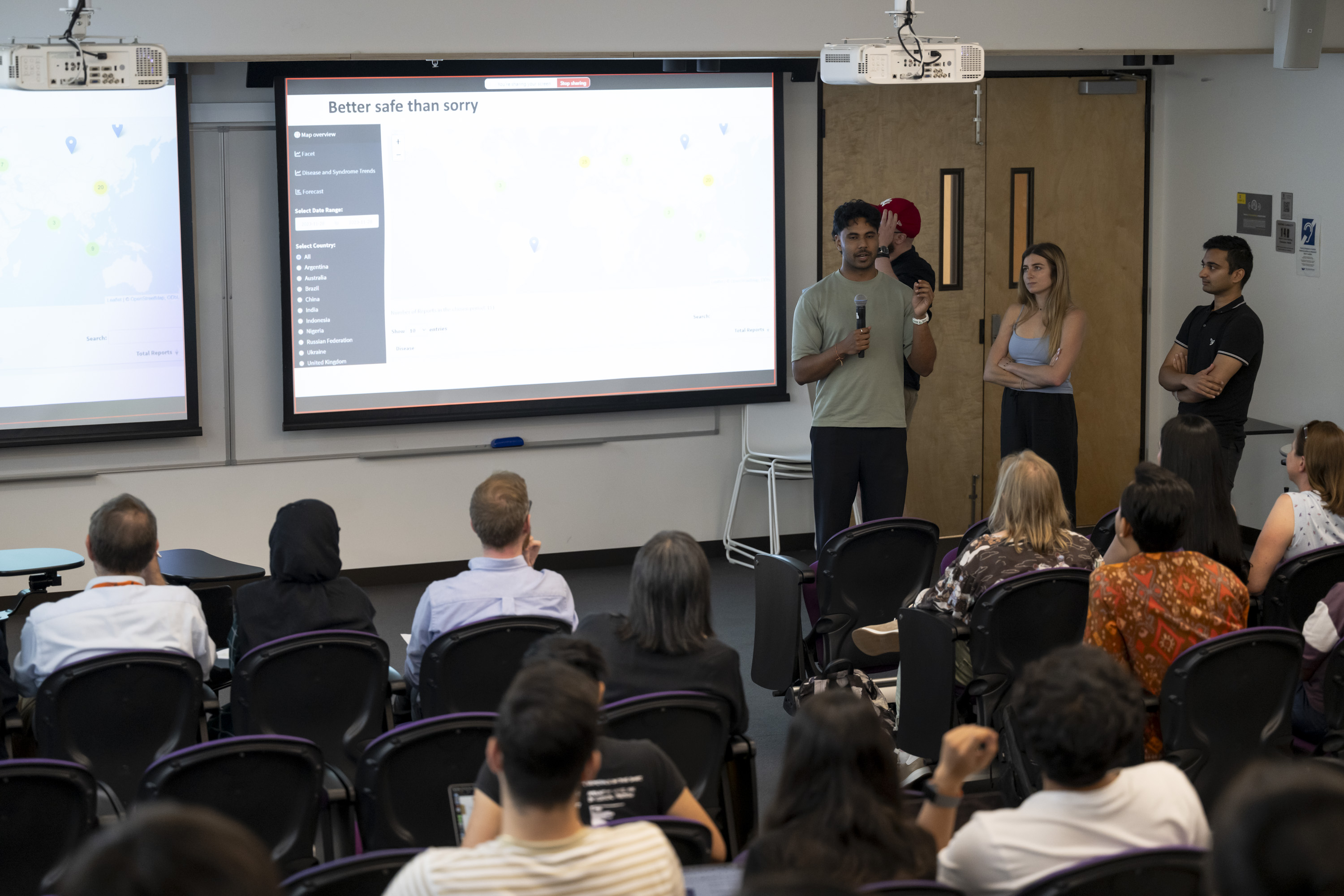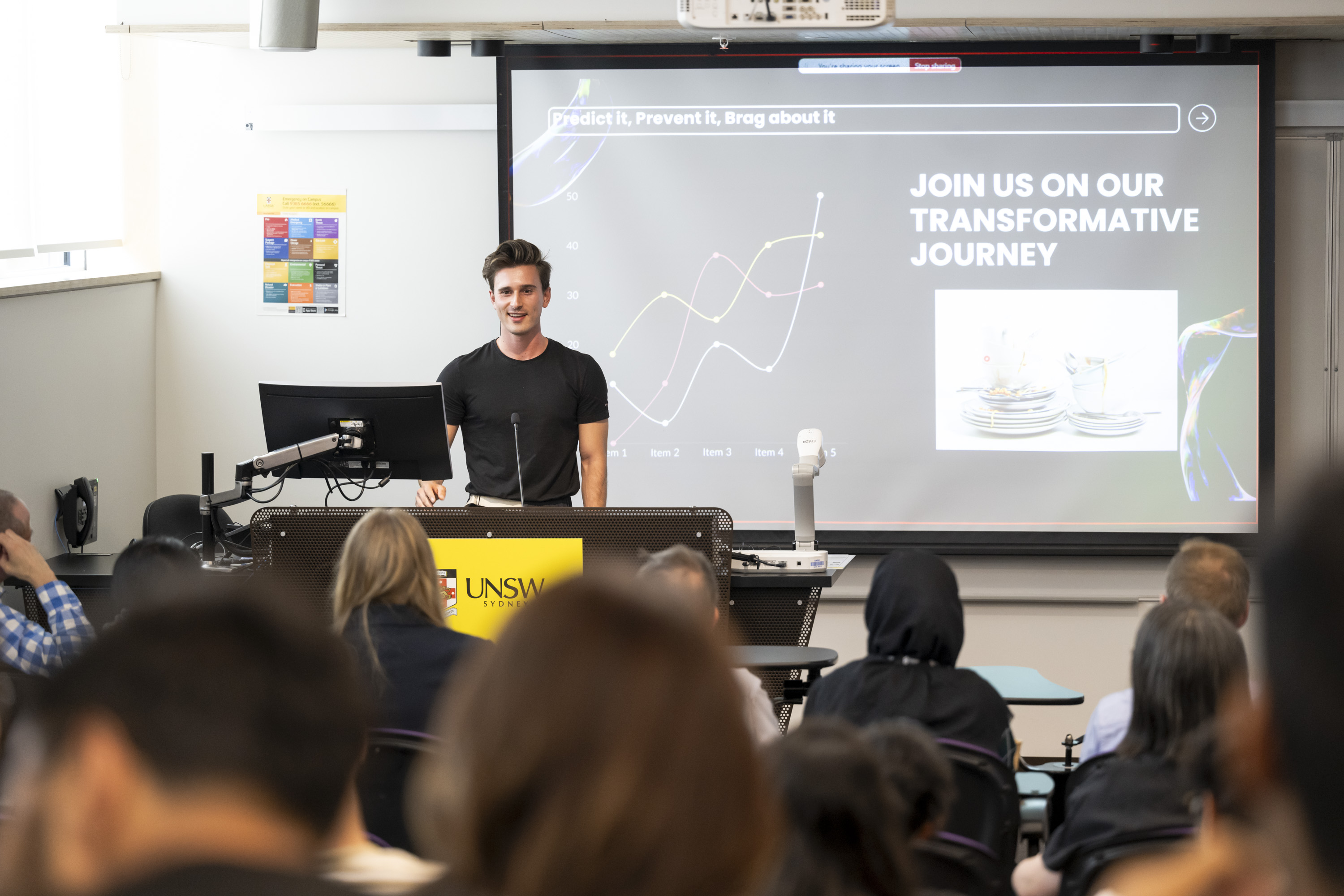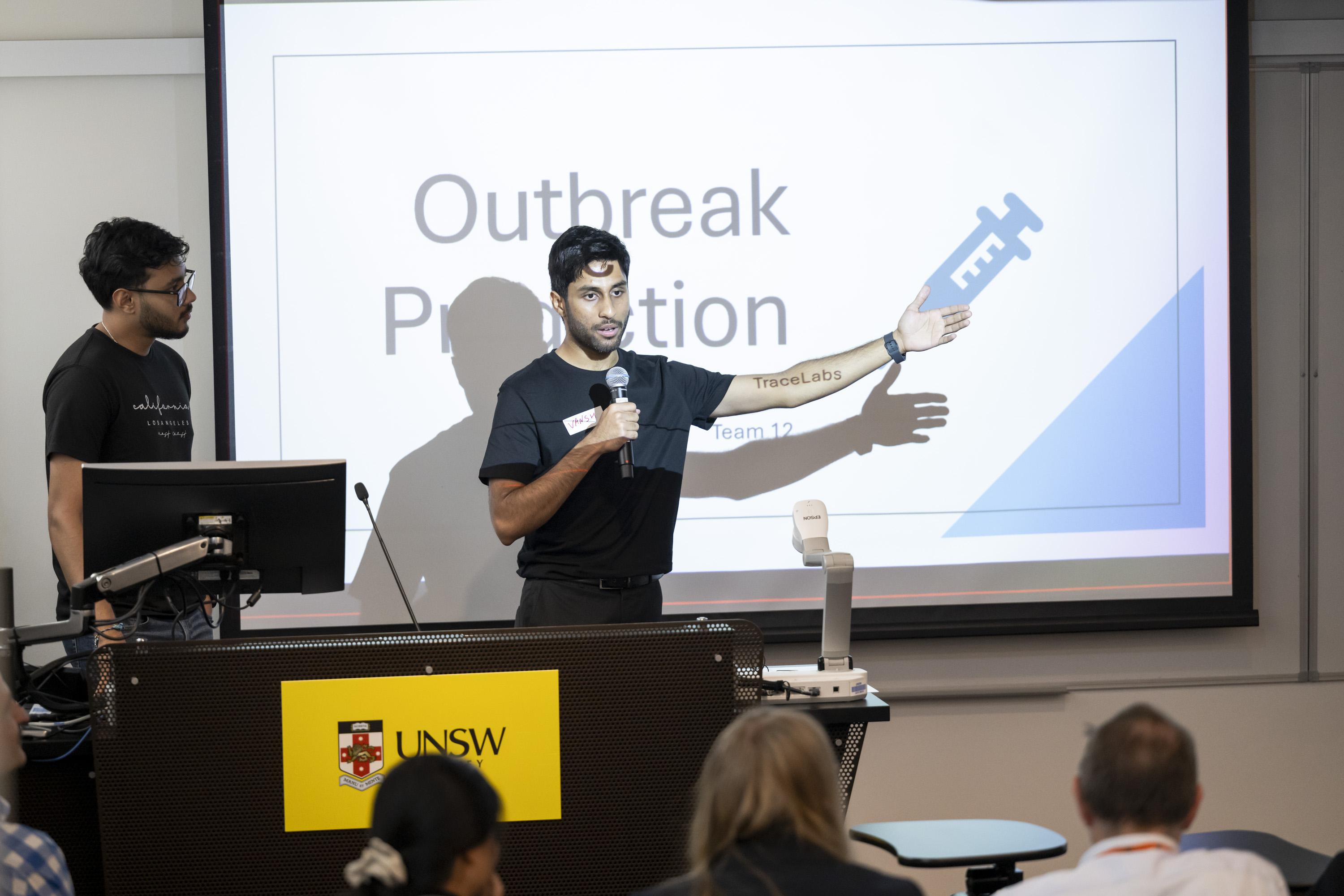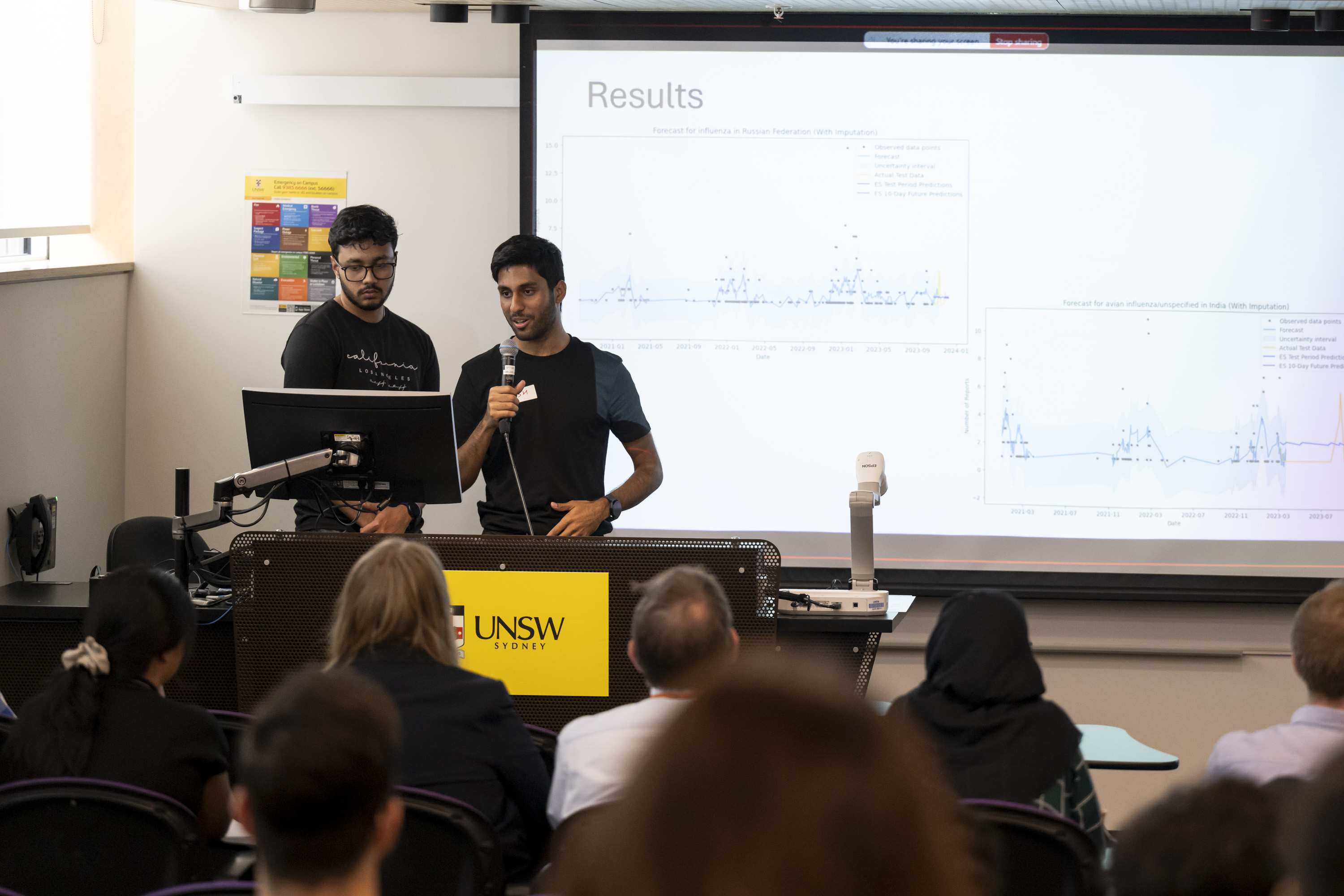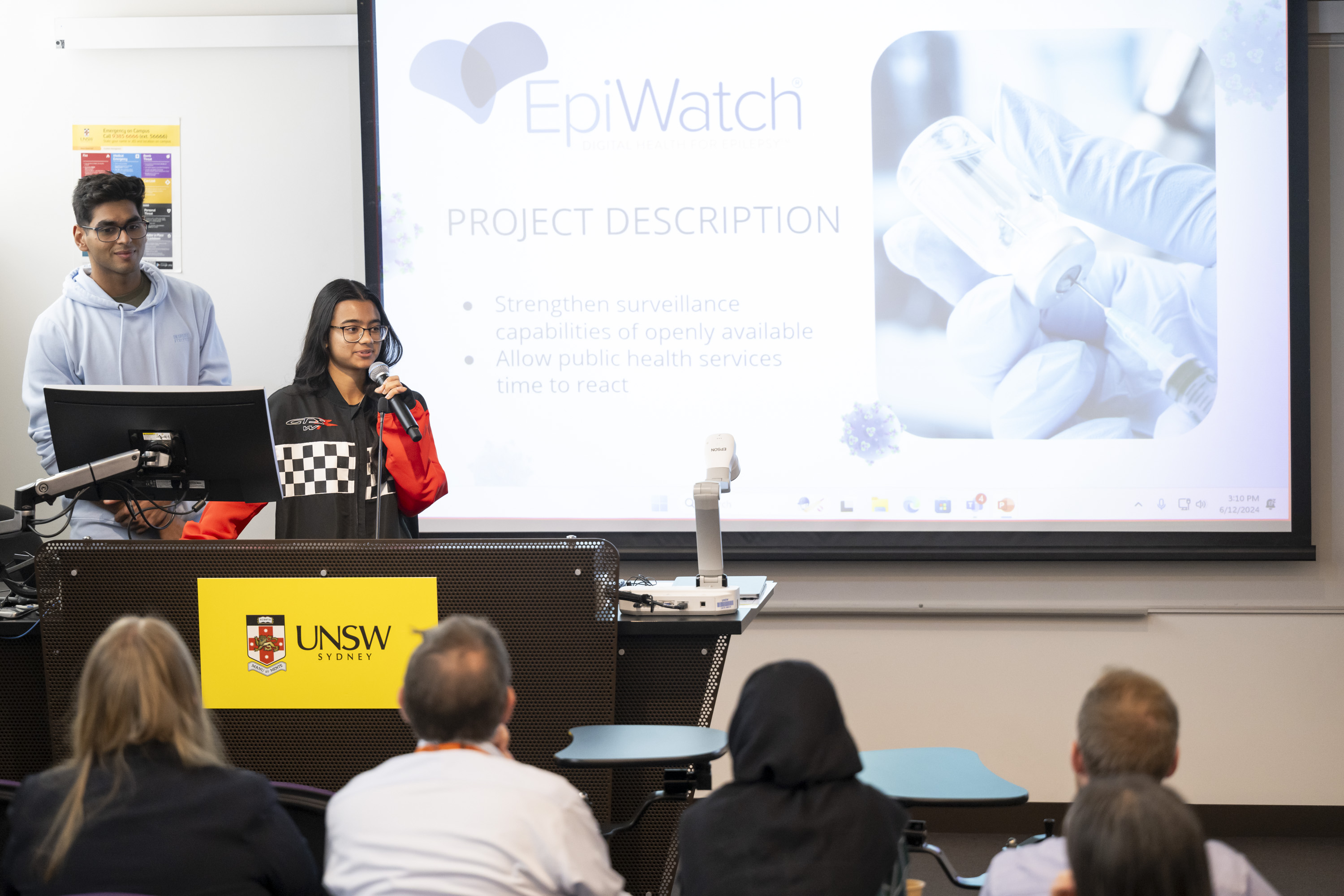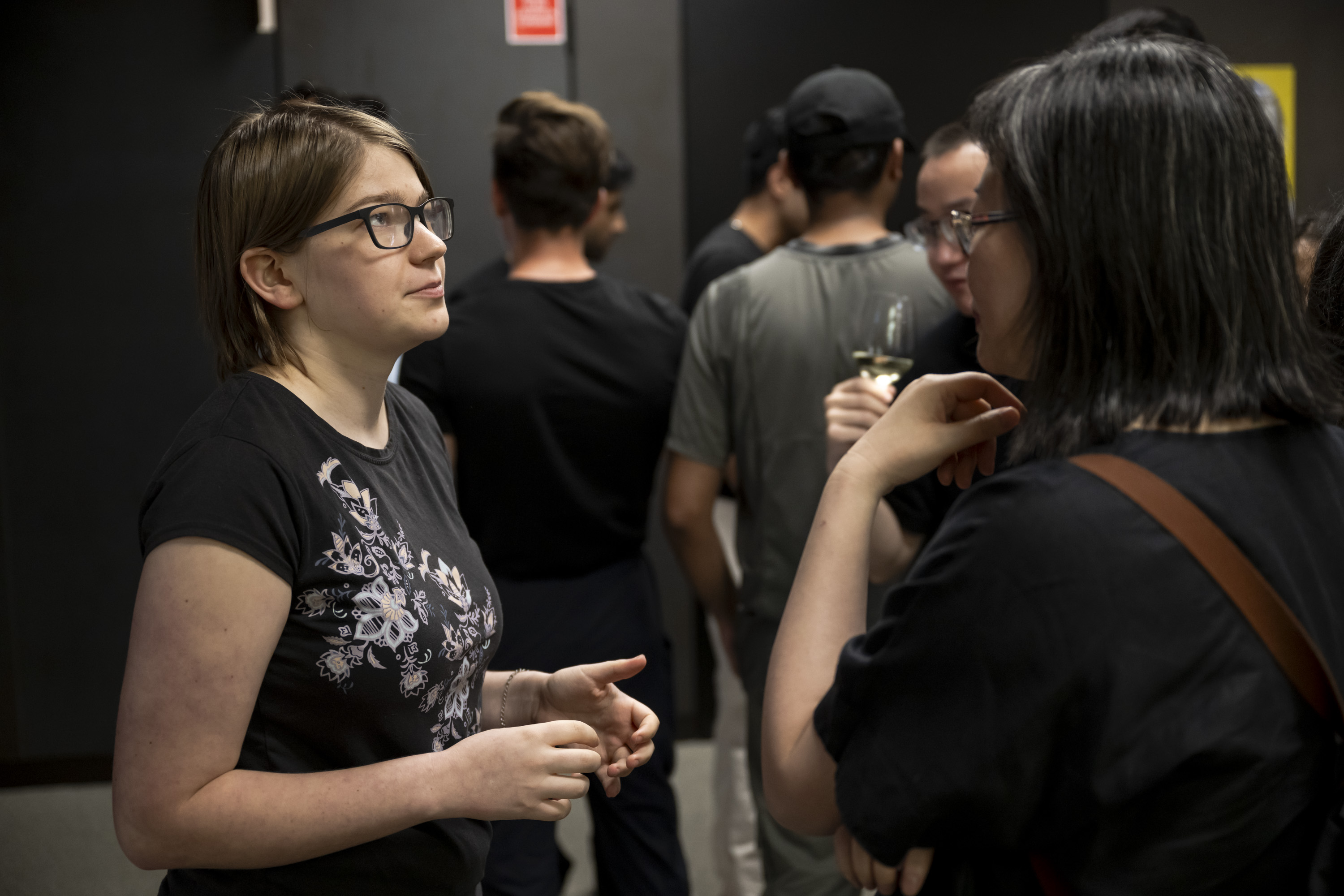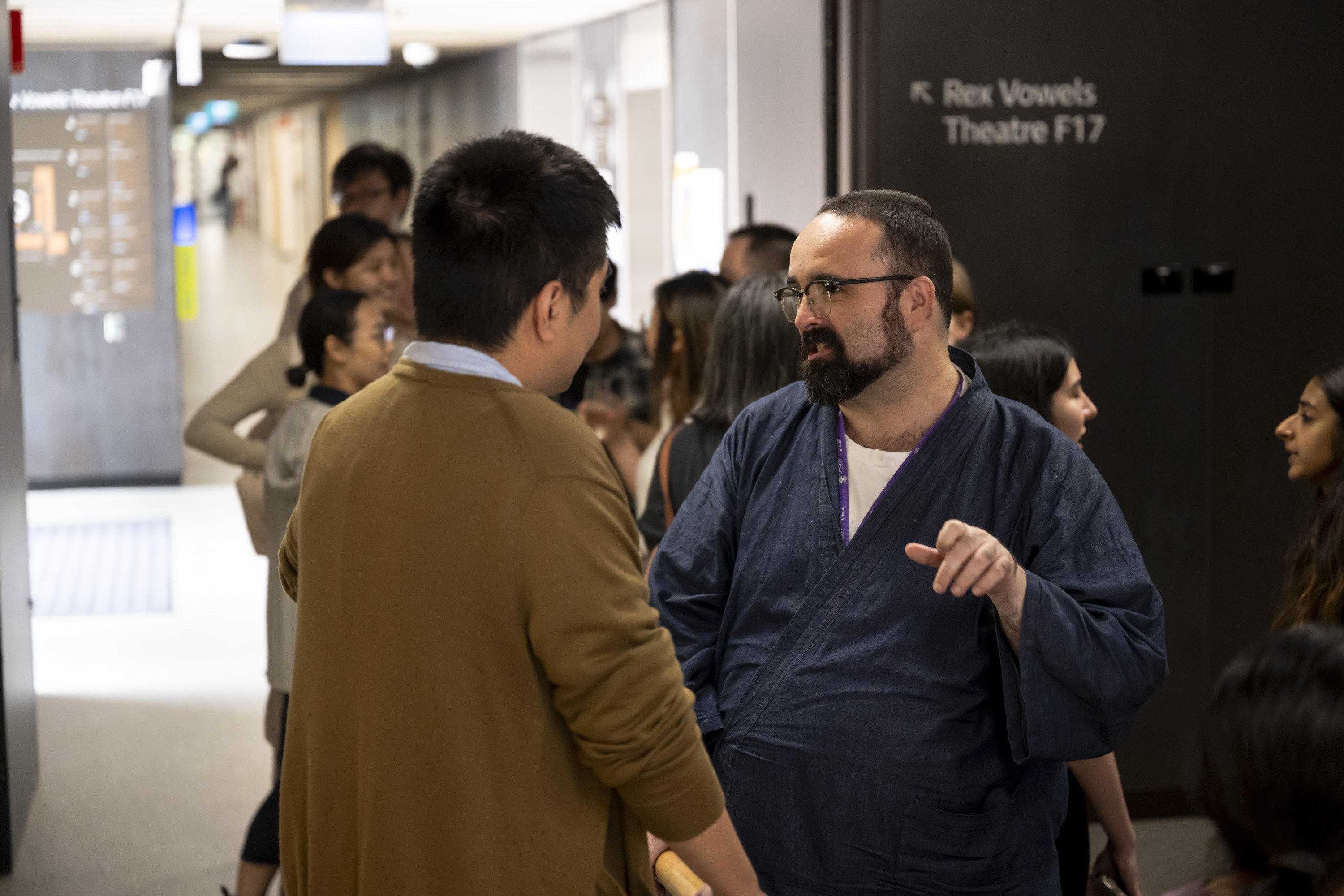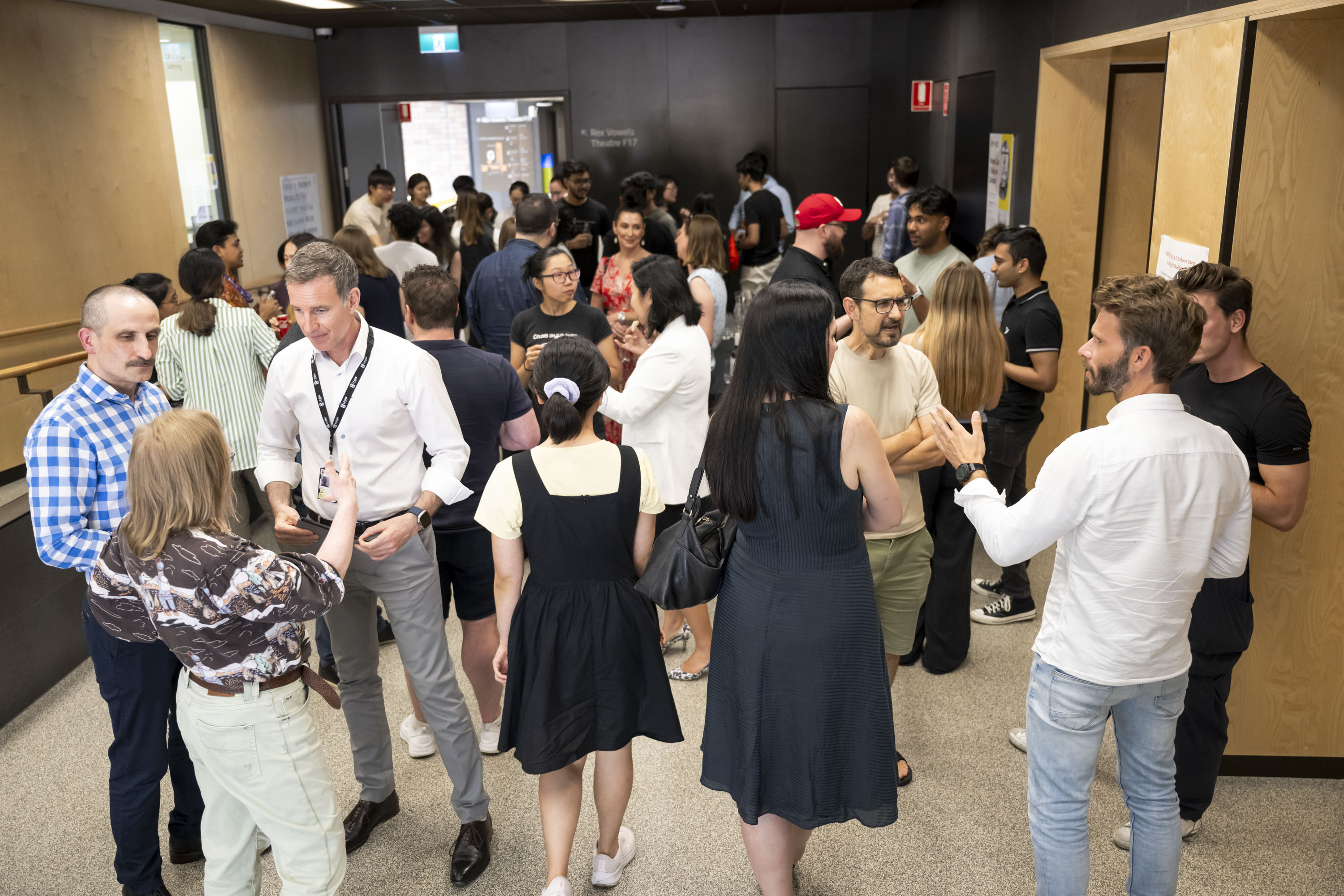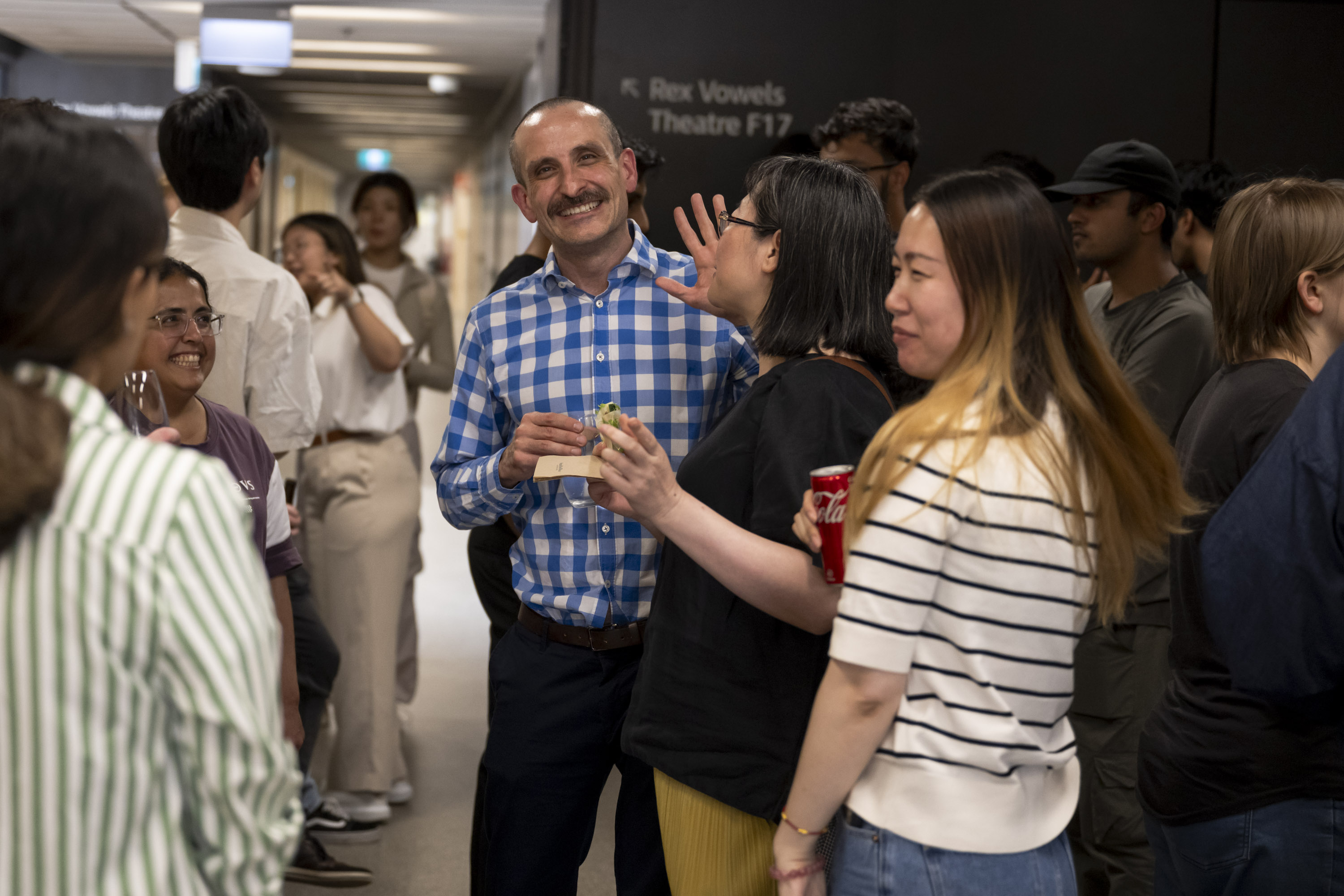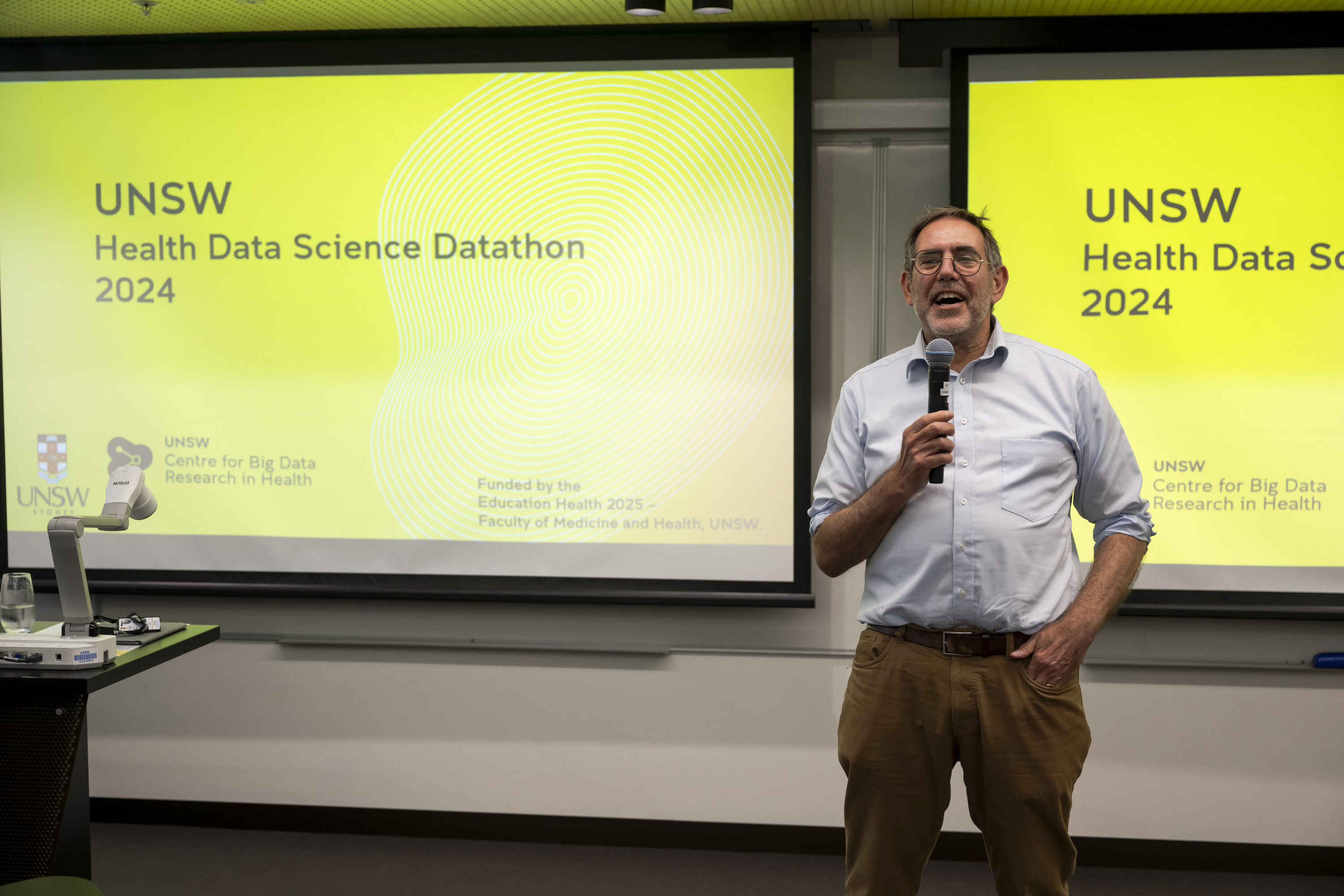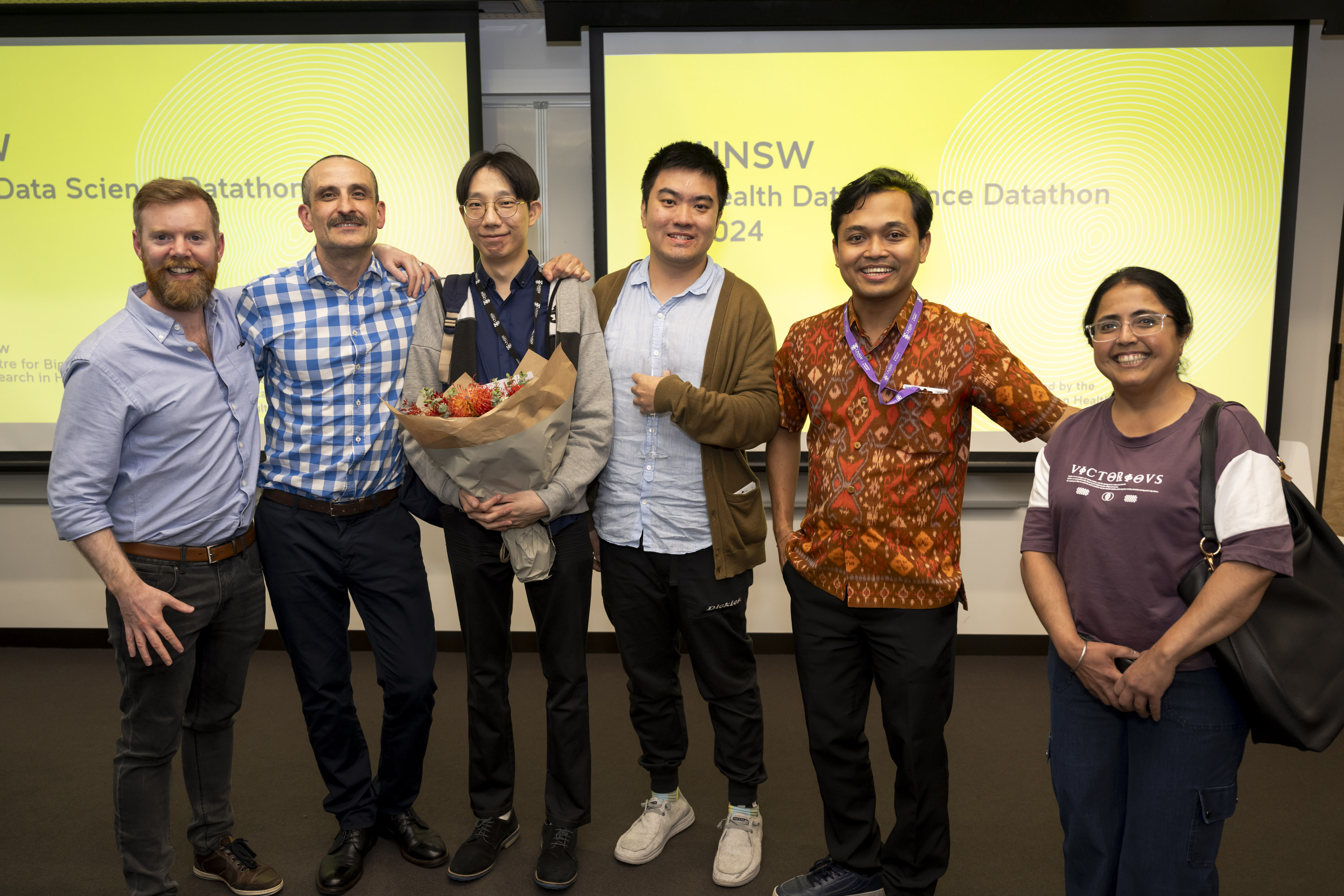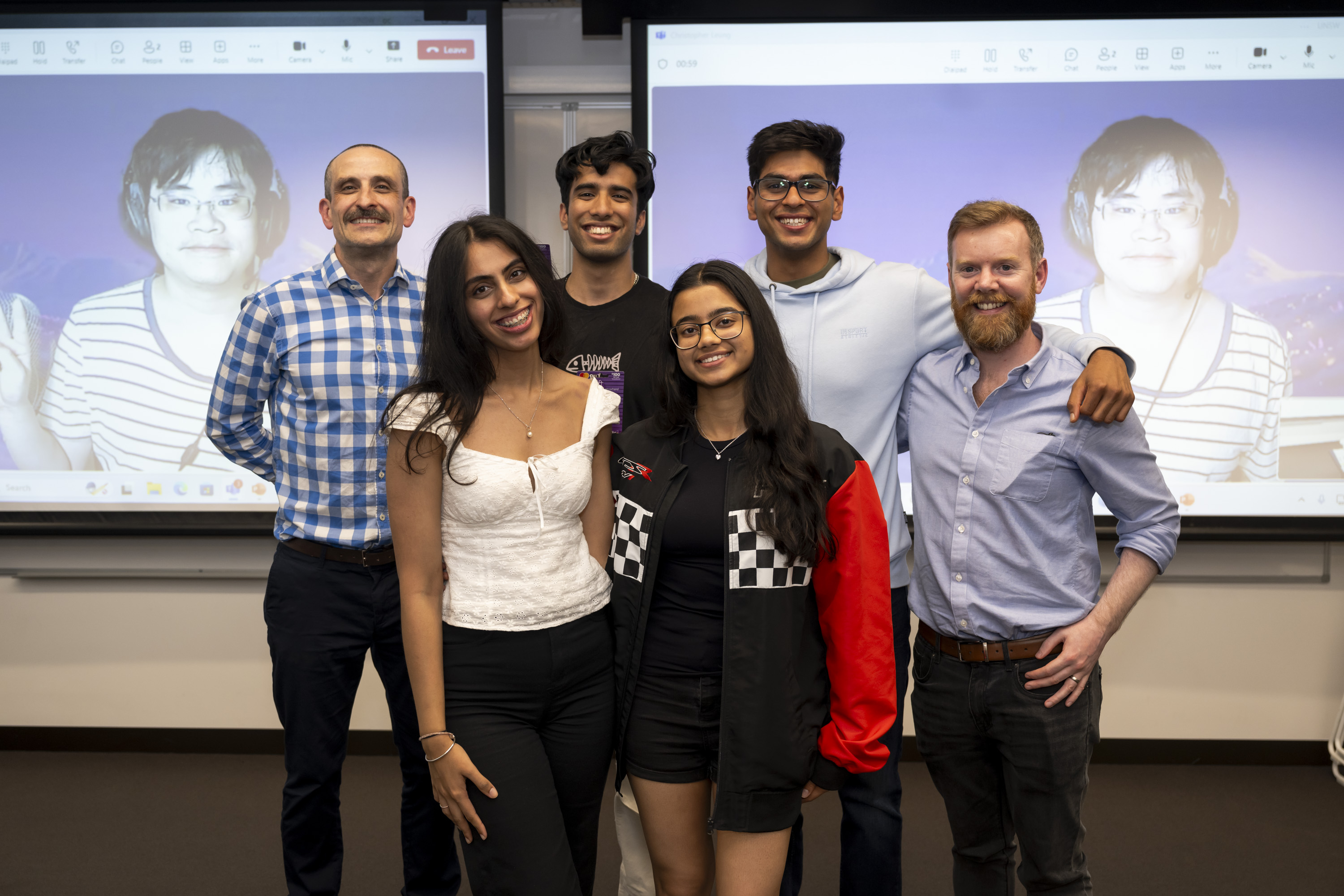Key figures
51 Students 👩🎓 from 12 different UNSW schools and research centres 🏫
13 Teams 🤝
70,000 rows of EPIWATCH\(^®\) surveillance data 📈
Two EPIWATCH\(^®\) infectious disease experts 🦠
One winning team 🌟
Overview of the event
The second UNSW Health Data Science Datathon brought together more than fifty UNSW students across thirteen teams on 5-6 December, 2024. Participants dived into EPIWATCH\(^®\) surveillance data, tackling the challenge of designing a data science pipeline to predict emerging infectious disease outbreaks.
Credit: Cassandra Hannagan
Two infectious disease experts from the EPIWATCH project were on hand throughout the event to guide the teams. They provided invaluable insights, answered questions, and offered feedback to help participants refine their approaches to analysing the data and crafting effective surveillance pipelines.
Credit: Cassandra Hannagan
The datathon wasn’t just about coding and data; it was also about enjoyment and camaraderie. The teams enjoyed good food and had loads of fun.
Credit: Cassandra Hannagan
On Day 2, finalist teams presented their work to a panel of judges.
Credit: Cassandra Hannagan
Announcing the winners
Credit: Cassandra Hannagan
Credit: Cassandra Hannagan
Credit: Cassandra Hannagan
Credit: Cassandra Hannagan
Congratulations to all the participants!
The data
The EPIWATCH\(^®\) infectious disease surveillance system provides near real-time monitoring for a range of infectious diseases and syndromes by scanning multiple curated and non-curated online news sources, including the WHO, CDC and Google News.
Each record in the dataset represents a news article mentioning an infectious disease or syndrome. Minimum data includes the disease or syndrome(s) in question, the timing and location of the report, as well as the title and link to original online article.
EPIWATCH\(^®\) data provides an early warning system—the canary in the coal mine for the next outbreak. In this example, media reports of unexplained pneumonia foreshadowed a Legionnaires’ Disease outbreak in Argentina, showcasing its power to detect outbreaks before they fully unfold.
What our participants said
I very much enjoyed working with my team members to brainstorm how to convert complex and messy datasets into well-organised formats for data visualisation.
I particularly enjoyed working with my team and hearing others’ approaches.
the catering was amazing!!
I loved every part of this experience and really appreciate the opportunities you have provided us all as students, to participate in such a fun, challenging and brain stimulating event.
Picture gallery
Explore the images from the day below. Credit for all images to Cassandra Hannagan.






![Runners-up [L-R]: Usha Kaur Khalsa, Ida Made Hrisikesa Wiweka, Professor David Simar (Deputy Dean Research Operations - Faculty of Medicine and Health), Zhiyuan Wang, (team member Haley Li not pictured) Credit: Cassandra Hannagan](images/LoRes2024/Datathon2024_UNSW_Credit_CassandraHannagan-296.jpg)
![Runners-up [L-R]: Christopher Leung (online), Harshita Punjabi, Neil Dadhich, Arnav Raina, Arya Ahluwalia Credit: Cassandra Hannagan](images/LoRes2024/Datathon2024_UNSW_Credit_CassandraHannagan-300.jpg)
![Winners [L-R]: Eleanore Williams, Damian O’Neil, Lisa Sharwood, Brianna Argall Credit: Cassandra Hannagan](images/LoRes2024/Datathon2024_UNSW_Credit_CassandraHannagan-302.jpg)

























